xxx re-sexifying Amsterdam’s Red Light District
A PROCESS BOOK
anna torres
graduation project 2022 amsterdam academie van bouwkunst faculty of architecture

2
“Architecture is never neutral. It either heals or hurts.” -MASS Design Group
This project is dedicated to sex workers around the world.
3
CONTENTS
sex work in Amsterdam
COMMITTEE INTRODUCTION OVERVIEW sex work legislations LOCATION
HISTORY
the other rlds of Amsterdam the other sex work industry
TODAY current situation existing infrastructure the red light narrative media coverage covid-19 crisis Amsterdam’s clean up policy peripheralisation & the erotic hotel ... and what about sex workers? a conversation with Jacqy the sex work industry in de Wallen
URBAN QUALITIES a nolly map a memory walk a study of the blocks
4
“don’t save us, save our windows”
7 8 10 11 12 14 20 30 32 34 36 37 38 40 42 44 46 50 52 54 56 58 59 60 62
ARCHITECTURAL QUALITIES
familiar language
foto: a hand-drawn archive
conversation with Paula
sensual disconnect
understanding scenarios
EXISTING SCENARIOS
WEIGHING OPTIONS
1: peripheralisation
2: hypernormalisation
3: resexification SITE BLAUWLAKKENBLOK searching for densification PROCESS & ITERATIONS a viable solution
resexifying De Wallen
leading principles STORY
intervention
DRAWINGS
TYPOLOGIES
IMPRESSIONS
BIBLIOGRAPHY
5 64 65 66 74 76 78 80 86 86 88 90 92 94 98 100 108 112 116 118 120 122 148 152 164 165
xxx: an
a
no
a
a
scenario
scenario
scenario
ACKOWLEDGEMENTS
6
Mentor
COMMITTEE
Hiroki Matsuura architect & urbanist hirokim@madma.nl

Additional committee members
Chiara Dorbolo architect chiara.dorb@gmail.com
Dafne Wiegers architect d.m.wiegers@gmail.com


7
INTRODUCTION
Questions of morality and judgements of values will not be the subjects of our investigation throughout this project. Sex work has been an integral part of all societies for as long as the world can recall. Regardless of beliefs and opinions on the practices themselves, the dialogue surrounding prostitution needs to be had, in order to give sex workers access to the same human rights as anyone else.
Rather than focusing on the moral implications of the sex work practices, I would like to work on seeing how the working and living conditions of sex workers can be improved through the use of collaborative spatial design.

Through the demystifaction of prostitution and an open and inclusive dialogue, I believe the taboo surrounding sex work can be lifted and can allow us to take a real look at the power structures upon which the sex work industry relies. Reflective of these immense power structures, architecture and urbanism will be used as tools to help rethink a more sustainable, inclusive and respectful sex work industry.
The fruit of this two year long research process is XXX, an architectural invitation to rediscover sensuality and intimacy, in the heart of Amsterdam’s historic De Wallen. Guided by an intuitive artistic approach, a sensitive collaboration with Amsterdam’s sex work community was born. Through a series of intimate conversations with sex workers and meticulous observations of the area, precious details, stories, needs and dreams came out as the building blocks for our project.
XXX playfully provides a fresh answer to the city’s current controversial questioning on how to deal with its evolving Red Light district. This intervention unapologetically gives back the city to sex workers. It recognizes the variety of sex worker’s needs by providing qualitative workspaces to sex workers. The result offers to sex workers and the city’s users a delightfully slow- paced, mysterious Red Light experience, and honours the key role sex workers play in our society.
8
The goal of this project is not to speak for sex workers, but rather include them in a conversation they havebeen left out of for too long.
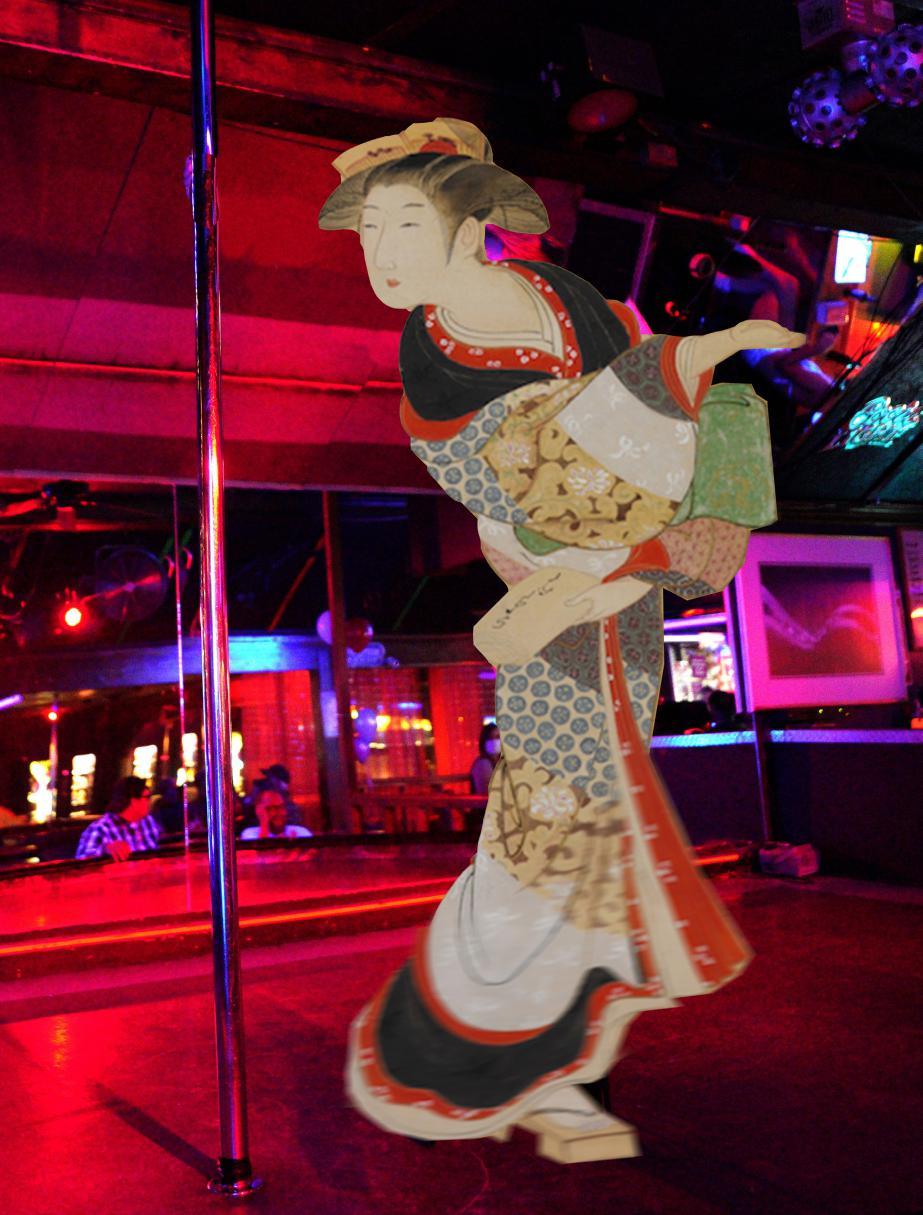
9
OVERVIEW
To this day, the stigma around sex work is still very present. Often, sex work is associated with the idea of sex trafficking, which is an unfortunate reality in the sex industry, but is not representative of the majority of sex work.
In the Netherlands, sex work is legal and regulated, meaning one cannot get arrested for selling or buying sex - but they have to be registered and paying taxes. Despite sex work being completely legal and often quite visible thanks to the famous “prostitution windows”, sex work is often, at best, accepted and tolerated in society. But that is not enough. Through this project, I would like to commit to not only accepting, but more importantly supporting, uplifting and including sex workers, based on the statement that sex work is work.
The spectrum of what sex work is is evolving everyday. Sex work comes in more and more different forms, in order to meet all kinds of growing demands. From medical sexual assistance to the physically impaired, to escort services, sex work is varied and not all sex workers are able to do the same work.
The world of online sex work has seen an increase in popularity in the past few decades. Cam girls, online escort bookings, and VR pornography for example are all relatively newly developped forms of sex work, which allow for higher accessibility, more convenience and lesser real life contact.
The sex workers’ fight for human rights and equal treatment is one which has been lsting for hundreds of year. Today, many are pushing in favor of the decriminalisation of sex work, which would provide the safest and most beneficial working conditions to both sex workers and clients. Unfortunately, only a few countries in the world have adopted this point of view, and sex work remains a prohibited, taboo and discriminated form of work in many parts of the world.
legalization
Under this system, prostitution (individual, brothels, etc) is legal and regulated. Not to be confused with decriminalisation (which sex workers tend to push for), which, unlike legalisation, allows sex work businesses to operate as any other regular business. and prevents sex workers from reeiving unfair criminal penalties.
abolitionism
This system allows for the legalization of both the buying and selling of sex between two consenting parties but prohibits the commercial selling of sex within brothels or public settings such as street solicitation. Prostitution is not regulated.
nordic model
Within this system, it is illegal for clients to buy sex, but it is legal for sex workers to sell it. This model can force sex work to happen in hidden, unsafe circumstances (because the client doesn’t want to get caught) and can put sex workers in dangerous situations.
prohibitionism
Under this framework, the seller, buyer and any third party involved is subject to criminalization under the law. This includes anyone who profits from commercial sex in any location or physical setting.
no data
Due to the taboo and unnoficial nature of sex work, it is hard to get clear data in many countries. Less date means less visibility, which translates to less safe working conditions.
10
sex work legislations
Worldwide sex work regulations, 2019

11
sex work in Amsterdam
12
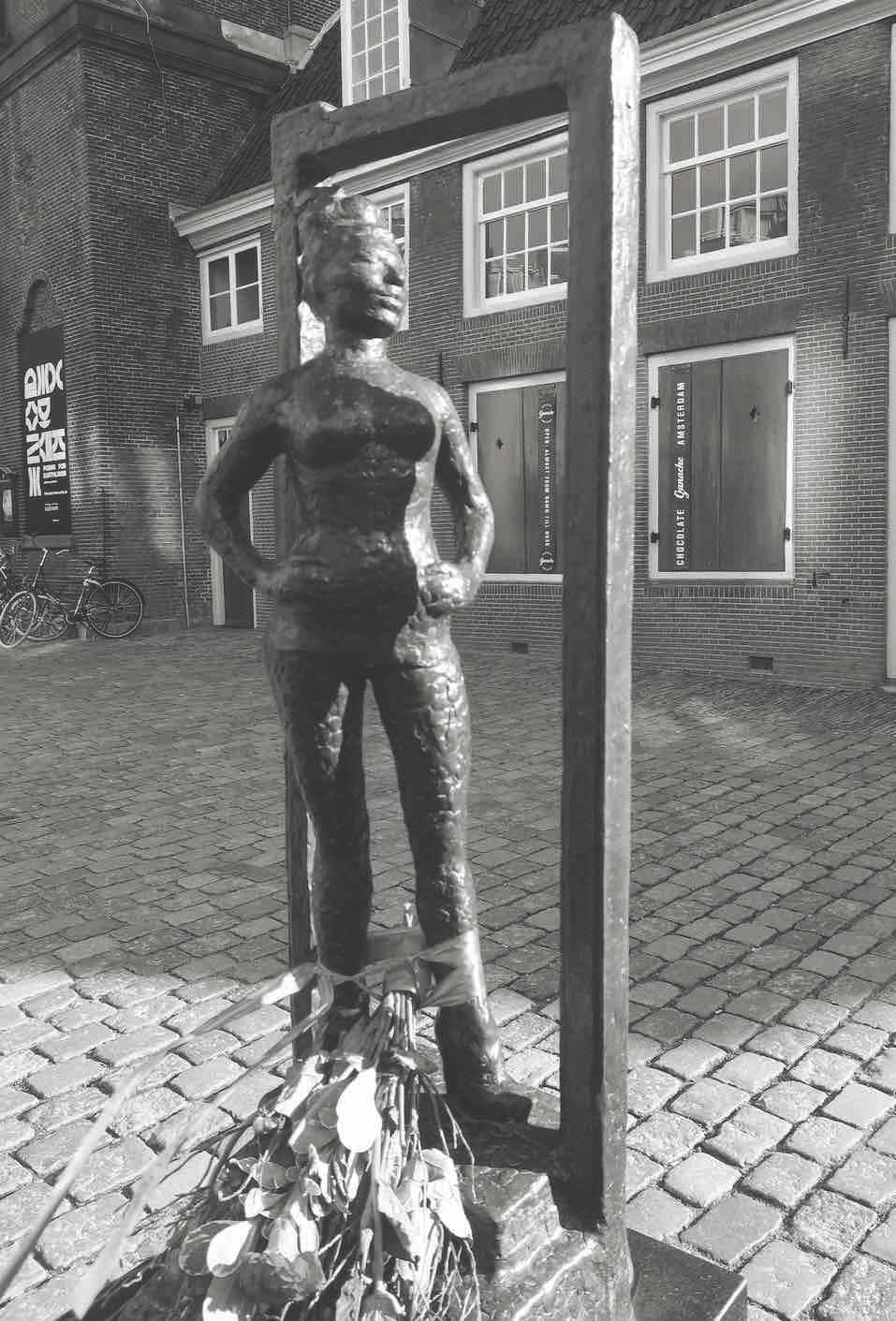
LOCATION
VECTORWORKS EDUCATIONAL VERSION
VECTORWORKS EDUCATIONAL VERSION
14
My area of study will be De Wallen, or the Red Light District of Amsterdam, an area of 6500m2 in the heart of the city with a strong identity and history. This area is today subject to many questionings, due to its unsustainable popularity with tourists, high rent prices, central location and intentions of gentrification. Red Light Districts (RLDs) around the world are usually objects of strong dualities. Romanticised and marginalised, avoided and frequented, these places have become areas of wonder and deception. A relatively new phenomenon that has been observed in RLDs is a process of gentrification, usually due to multiple, local factors. Both “tourism gentrification” (the transformation of the urban space to attract more affluent users, in this case tourists) and “normalisation” (the displacement of sex-oriented businesses and activities) contribute to erasing the character, diversity and layered complexity of the Red Light District. Although portrayed by the media as a messy, problematic area in the heart of the city, the Red Light District of Amsterdam is in fact an area which is
home to multiple layers of social diversity. The problems that the RLD faces stem not from the presence of sex work itself, but rather from what sex work attracts.
A few points I wanted to consider through my research:
- Facilitation of unsustainable, mass tourism
- Presence of airbnb’s, hotels and pieds-aterre in the center, driving rent prices up and forcing residents, small local shops and sex workers to move out
- Shift in the sex work industry to accomodate mass tourism - change in the clientele
- High amount of touristic facilities: waffle shops, souvenir shops, pubs
- Loss of the true identity of the area: De Wallen becomes a reflection of a reflection of what people expect to see
My first visit of the Red Light district triggered a fascination for the place. An intense, drunkening atmopshere came over me, and the lights, sounds and smells of the crowd and the streets became part of an urban lanscape which still amazes me to this day. It became clear that the RedLight district was a place of contrast and dualities, which created a constant sense of unneasyness. The hyper-intimate was spilling out into the public, a need for anonimity and simultaneous visibility was felt, the female body felt vulnerable but hyper-surveilled through CCTV camera systems. The area was a place of extreme consumption, ranging from waffles, to weed, to sex.
Having always been passionate about issues of feminism and sexuality, I wanted to approach the world’s oldest profession from a spatial perspective and dive deeper into the subject.
15

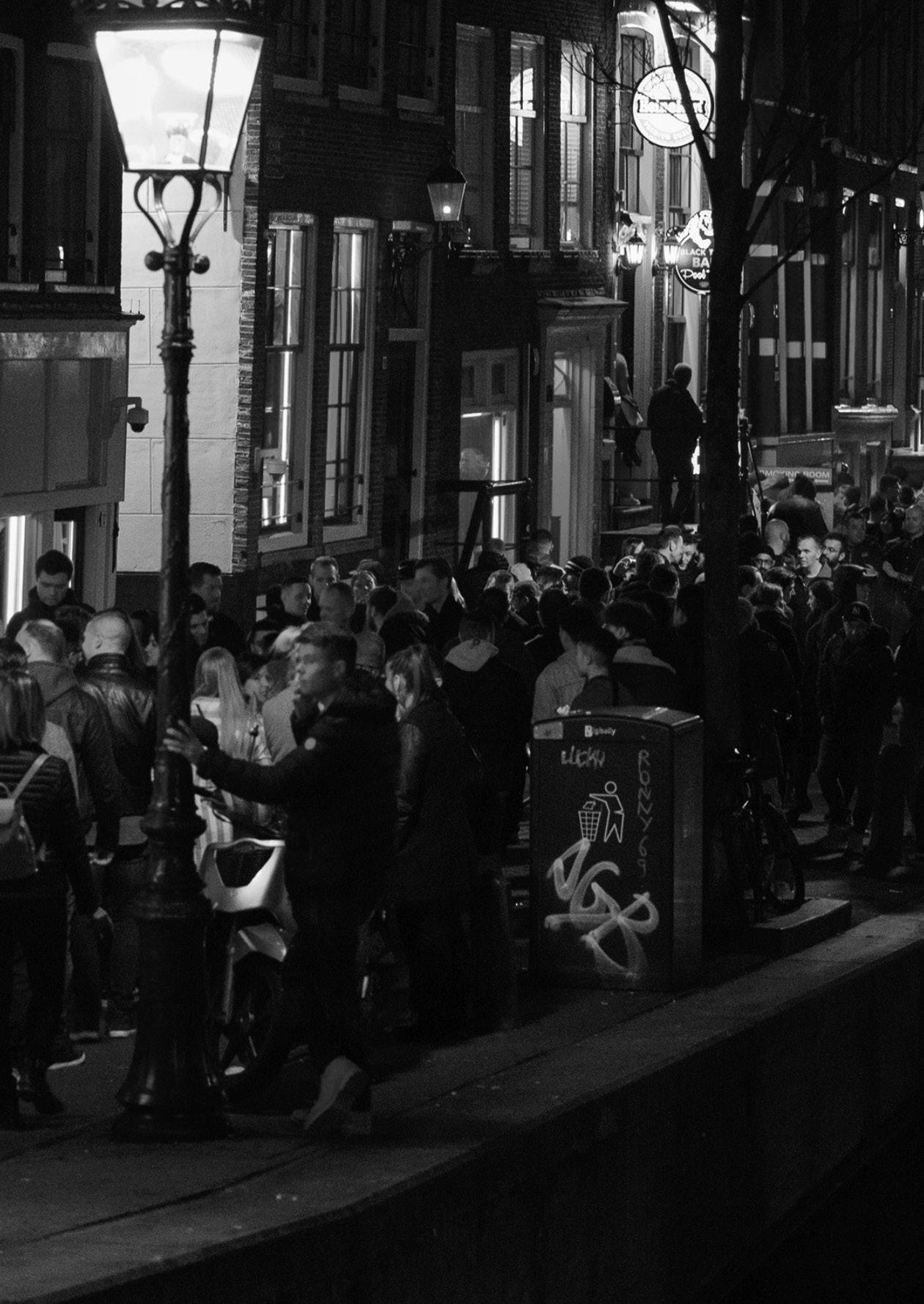
Amsterdam’s Red Light Districtis a place of intense dualities,where the public and the hyper-intimate rub shoulders, and where the fight for visibility andanonymity is constantly present
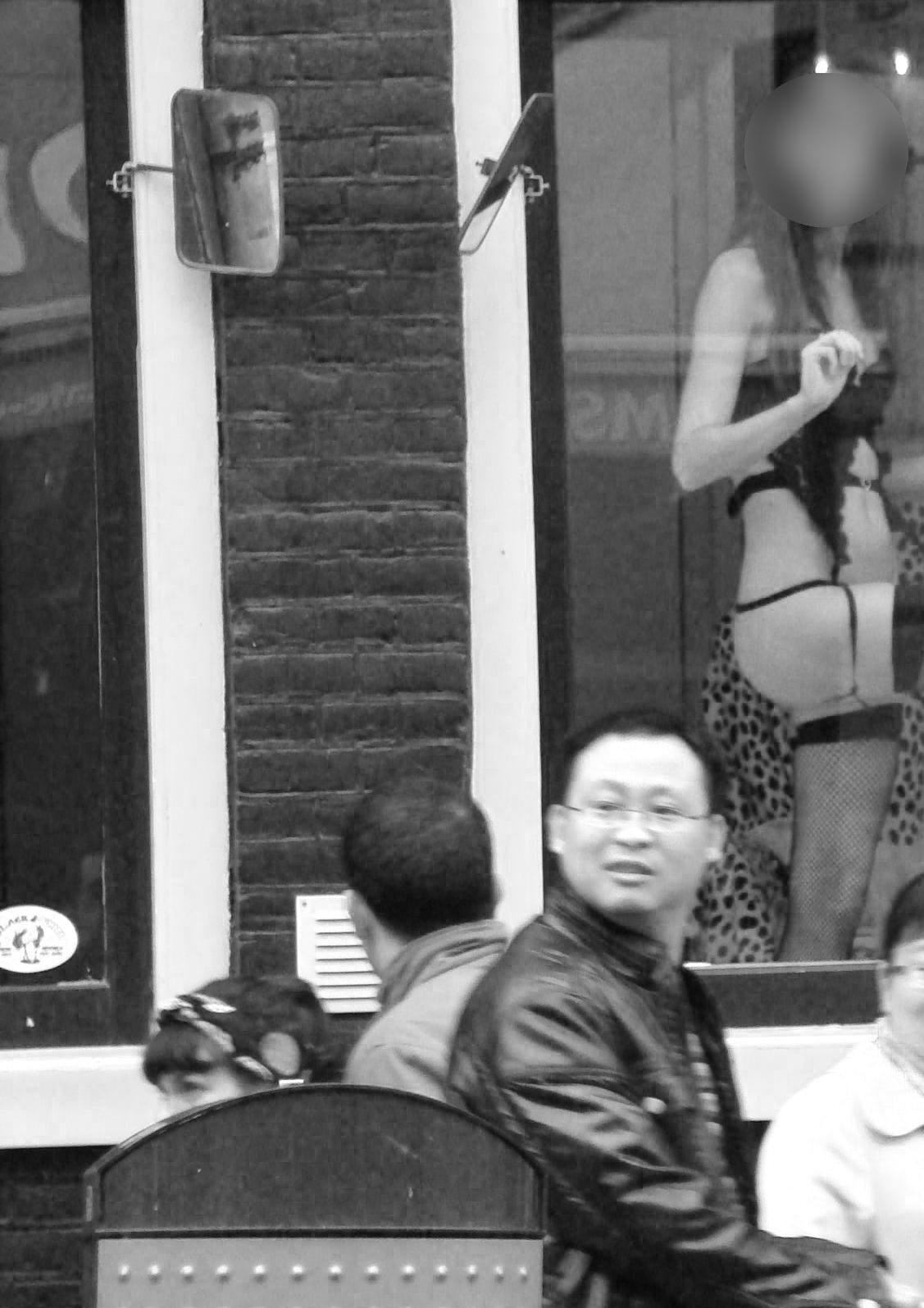
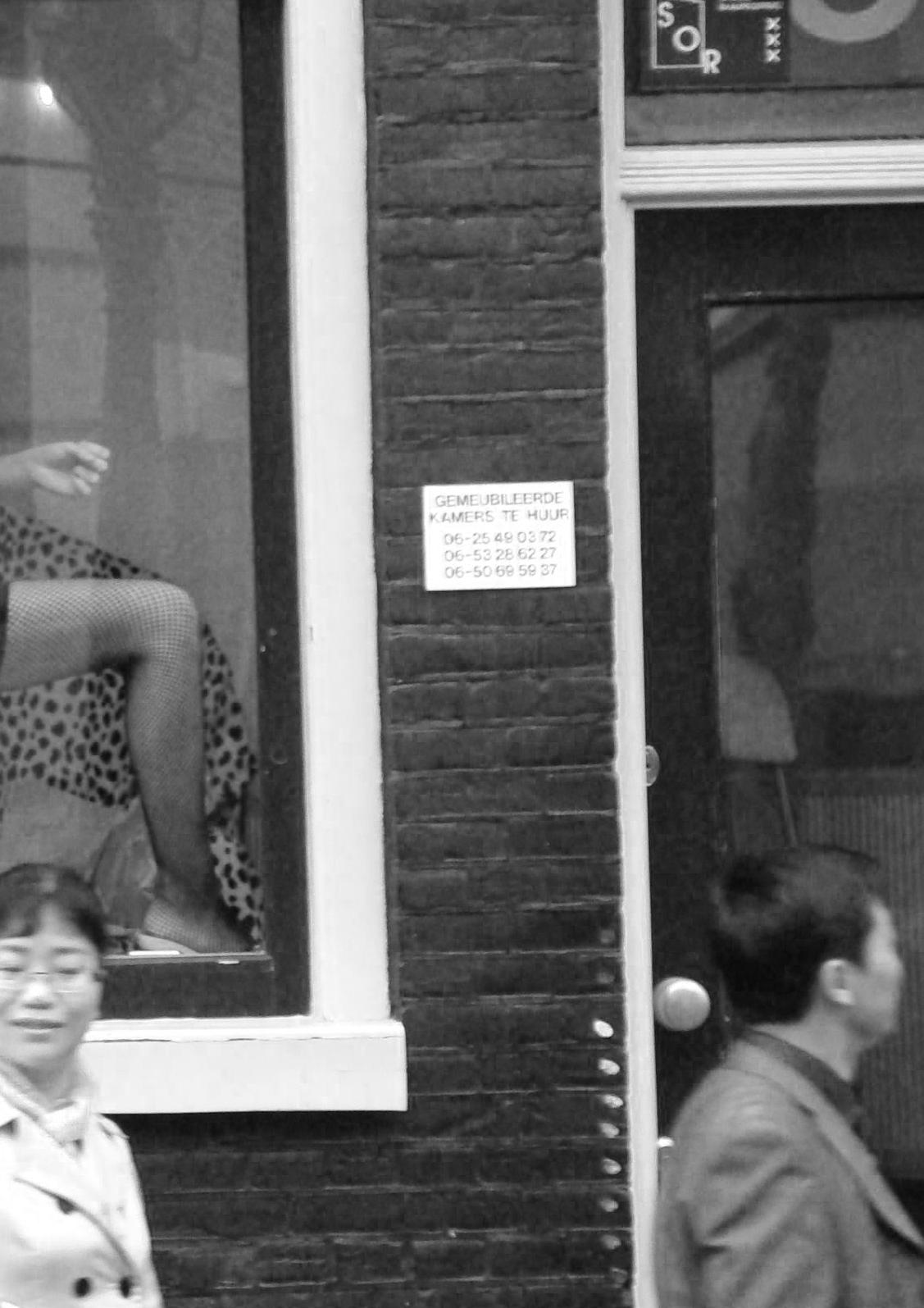
HISTORY

20

21
“ Because whores are necessary in big cities andespecially in cities of commerce such as ours -indeed it is far better to have these women than notto have them - and also because the holy churchtolerates whores on good grounds, for these reasons,the court and the sheriff of Amsterdam shall notentirely forbid the keeping of brothels. ”
- Amsterdam law, 1413 Amsterdam, 1544

22
Stovehouses, Anthony of Burgundy, 1470

23

24
Brothel, Joachim Beukelaer, 1562

25
Le putanisme d’Amsterdam, Elie Jogchemse de Rhin, 1681
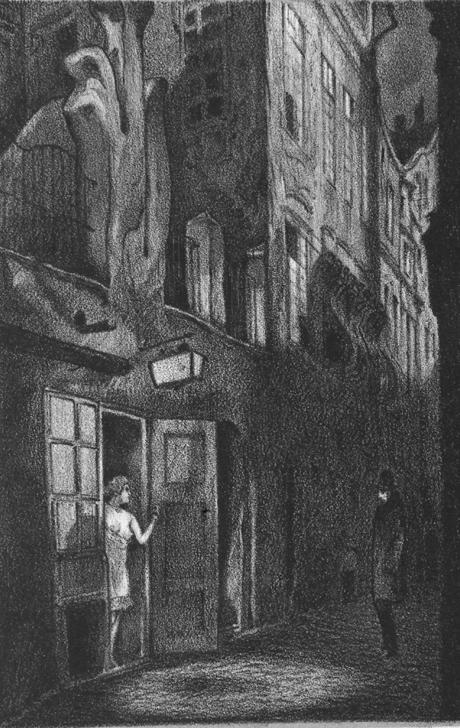
26
Rosina, Hugo Steiner, 1916

27
Unknown, Amsterdam sex workers, 1905

28 Amsterdam, 1968

29
Huub Prickaerts, Amsterdam, 1993-1996
Smaller, quieter and much more discreet, these Red Light Districts see a much more local clientele and blend into their surroundings seamlessly.
To the west, in Singelgebeid, around 60 windows form the small red light district in a more private setting.
Towards the south is located the red light district of De Pijp, being the smaller district of the three with 40 windows.
Placed along the water, this district offers a completely different experience than the other two.
All three districts have seen a drastic reduction of the number of windows in the past decades, and the continuously shrinking districts could very much disappear.
31
Despite De Wallen being Amsterdam’s mostwell known Red Light District, the city hoststwo other areas of window prostitution, inSingelgebeid and in De Pijp.
brothels / private houses gay sex clubs / cruising bars swinger’s clubs
In parallel to the window sex work industry, Amsterdam also hosts a myriad of different sex clubs, each pertaining to different clienteles and target groups.
Here, brothels, cruising clubs and swinger’s clubs have been inventoried and located on a map of the city.
Brothels and private houses are closed places where sex workers stay and can offer their services to clients, usually in a private setting. We can observe their high number and relatively homogenous repartition through the city, due to their smaller sizes and popularity accross the map.
Swinger’s clubs, or group sex clubs, due to their larger nature and need for more privacy, are located on the outskirts of the city. For those who reqire even more privacy (and who don’t want to cross paths with their neighbours), more swingers clubs are available in more remote areas, accessible by car.
Gay sex clubs and cruising bars have played a crucial role in the development of Amsterdam’s city center, due to the importance of the LGBTQIA+ community. Their presence in the center has therefore been established since a few decades. However, due to the recent gentrification, spikes in rent prices and covid’s impact, many clubs have had to close doors indefinitely.
33
What are the different storylines being told andwho do benefit?they
To this day, sex work is still an inseparable part of Amsterdam’s story, playing a role in the city center among many other stakeholders, actors and communities. However, certain problematics surrounding the area seemed to come up over and over, and some matters seemed to be alarmingly pressing and complex.
It became evident to me that, in light of this project, I would have to take a deep dive into this complex net of relationships, and try to unravel all its entangled threads one by one.
My area of study being De Wallen, there was sufficient information for me to dig deeper into. I set out to investigate by means of visits, drawings, observation, online research and in-person interviews...
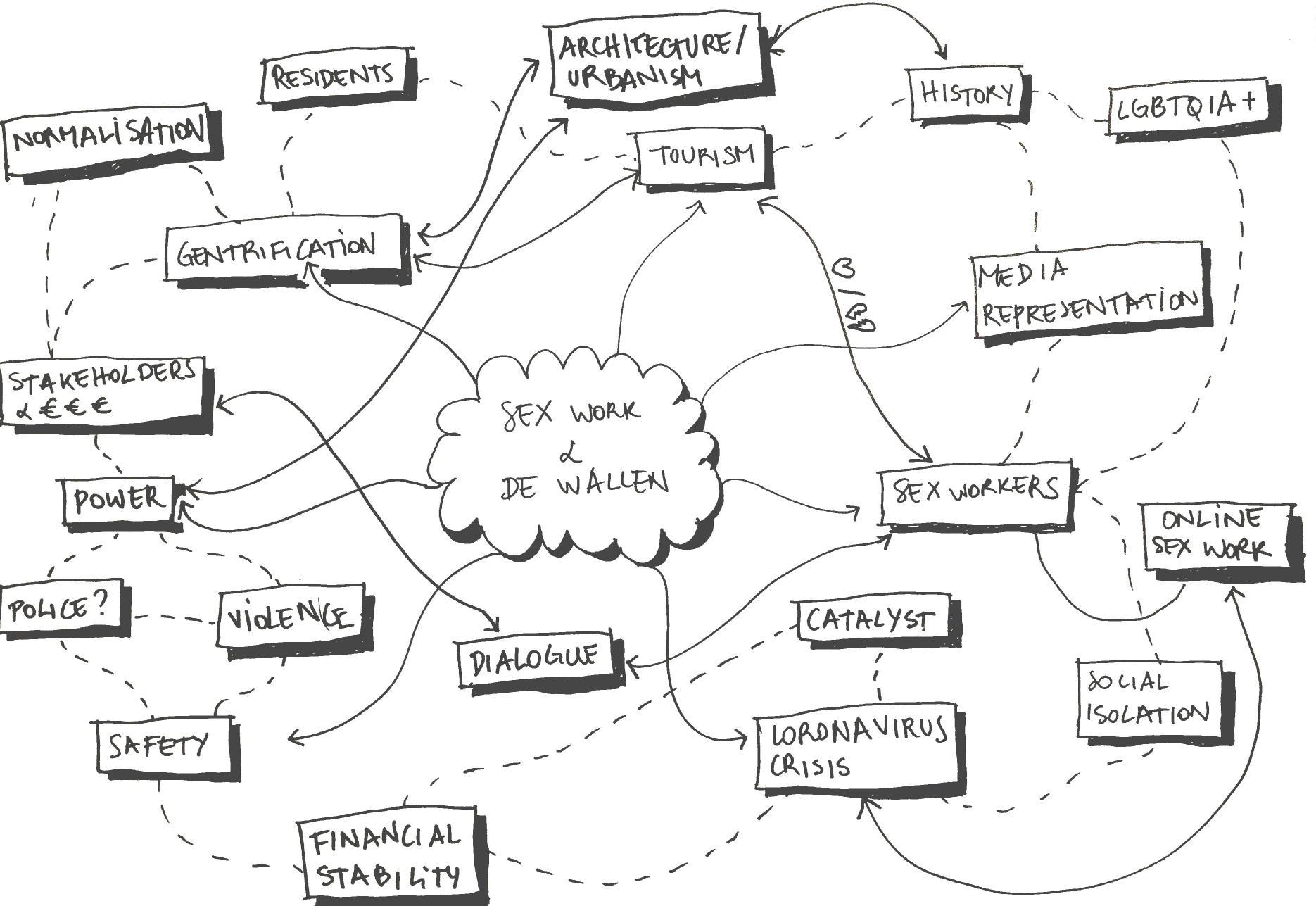
34
Who is in charge andwho has the power?
What does each stakeholder want and need?
TODAY

35
current situation
In parallel to the sex work industry, the RedLight district is also home to many businesseswhich cater to the tourism industry. From pubs,souvenir shops, hotels and waffles stores, todozens of Italian restaurants, the Red Lightdistrict’s identity is lost and becomes of place ofhyper consumption, convenience and turns intoa “Disneyfied” version of what people expect to see.

36
existing infrastructure
Ranging from intimate encounter spaces to mass spectacles, Amsterdam’s RLD is home to a variety of sexwork infrastructures. These establishments respond to an increasingly larger, more varied clientele seeking varying types of experiences.
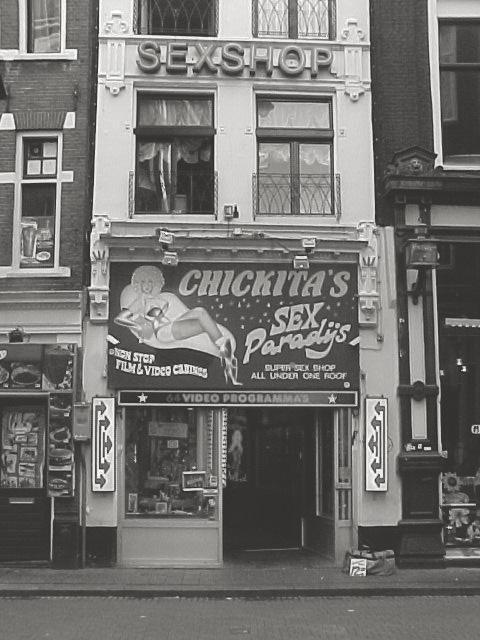

I would like to investigate further on the different typologies of sexwork infrastructures and their impact and implications on the urban fabric.
Sex theatres are built to accommodate massive amounts of visitor and seat erotic shows of hundreds of people. These theatres also offer smaller, private shows
Sex shops are probably the most accessible stores of the Red Ligh district, in the sense that they cater to a varied clientele.
Strip clubs provide erotic entertainment on a slightly more private scale than erotic theatres.
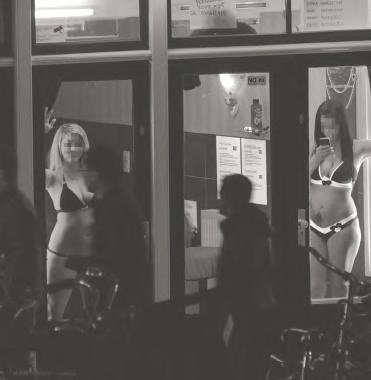
The notorious Red Light windows, which sex workers can rent through window brothels, offer sex workers the ability to work from behind a window. Workers must be registered as independant workers to work there, and the rent prices for a single shift (half a day) are often extremely high.

37
the red light narrative
Today, Amsterdam has become a top touristic destination - in large part due to its red light district - , with the city welcoming over 8 million tourists a year.
Due to its dense city center, narrow streets and lack of proper public space, the city does not have the infrastructure to handle such crowds. This results in an oversaturation of Amsterdam’s center.
In parallel to this oversaturation, the city is using this as a way to push an alarmist red light narrative. Through publications, and on media coverage, the message is often the same: Amsterdam has gone wild, and we need to tame it.

Although undeniably congested, the city center’s condition is not a desperate one, and is definitely not as dramatic as the mu nicipality is pushing. Yes, a need for livable and clean urban context is normal and should be granted to all - however, the city does not need to be smoothed out of all its irregularities and non-conformism. This is a point brought up by Rene Boer in his publi cation Wallen 2020: A Counter Manifesto
Amsterdam’s municipality is multiplying campaigns and actions have been put into place. Unfortunately, the interventions seem to be a more symptomatic approach to the problem, trying to alleviate the result of the problem rather than the root of it.
The “I Live Here” campaign was launched in June 2018, on the initiative of local residents - in the hopes of reminding visitors that the RLD is first and foremost a residential area.
The 0.0% zone campaign aims to reduce alcohol consumption in the RLD, by forbidding the drinking of alcohol out in public. More recently, Amsterdam’s municipality has completely forbidden the sale of alcohol in the RLD, to avoid the misbehaving of inhibitted tourists.

38

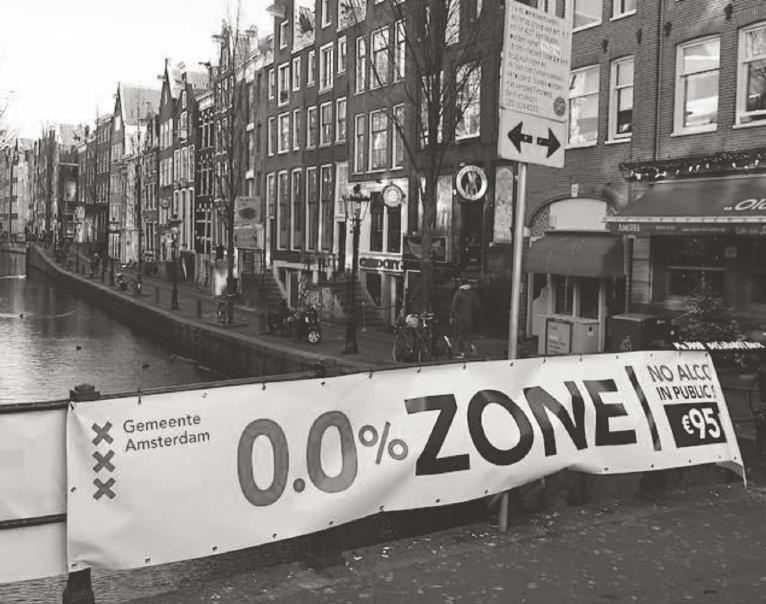
39
“Stop the alarmism. Stop the bourgeois, revanchist moralism that seeks to draw the last bit of unpolished urban spaceinto the rest of the city.”
- Wallen 2020: A Counter Manifesto
media coverage






40






41
Covid-19 crisis
The Netherland’s sex work industry has been hit hard by the crisis, and many sex workers have seen their activities become temporarily prohibited. Despite these demands from the government, most sex workers have not received emergency funding and some have had to continue their activities - illegally - exposing themselves and others to potential health and safety hazards.
Sex workers have, specifically during the coronavirus health crisis, protested the lack of inclusion from the authorities
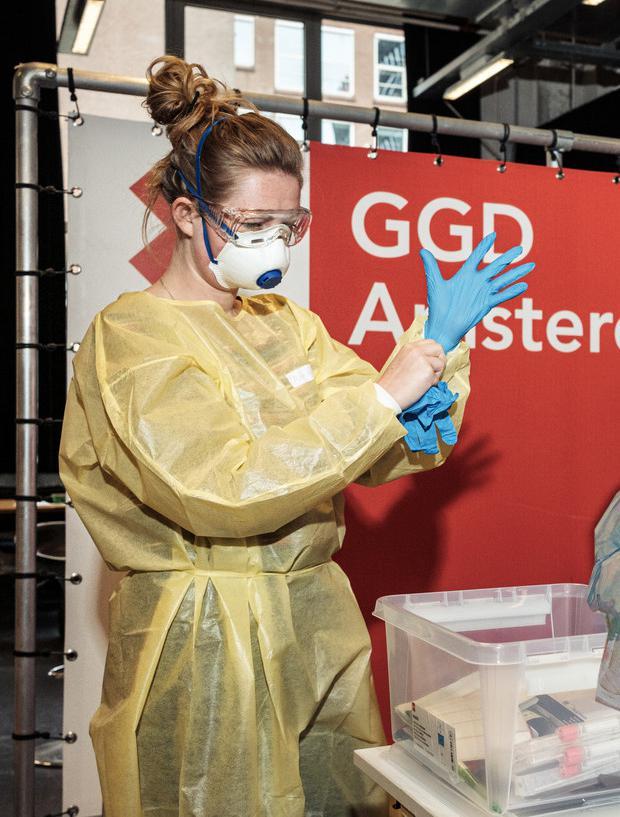
in conversations that concerned them. Decisions concerning their work environment were taken without further consulatation, and some sex workers did not have access to financial compensations when they were forced to stop working, due to inequalities amongst business registrations.
GGD’s covid testing infrastructure (2020) and Toulouse-Lautrec’s L’Inspection Medicale au Bordel Rue des Moulins (1894), collage
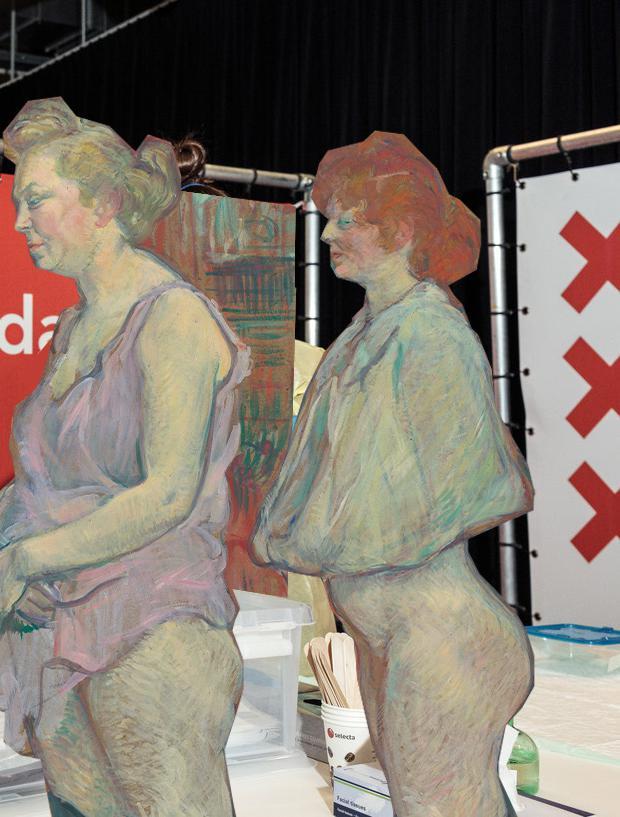
The current health crisis has exposed a lack of stability and security in the sex work industry, which was present well before the arrival of the coronavirus.
Amsterdam’ clean up policy

Today, a climate of uncertainty reigns on the streets of De Wallen. The area has been the target of drastic developments which aim to cleanse the center of its characteristic ruggedness.

peripheralisation & the “erotic hotel”
Project 1012 is an initiative from the municipality of Amsterdam started in 2007, to revitalise the city’s Red Light District and tackle problems of “sex work trafficking and corruption in the city center”. A lot of sex workers have protested against the plan, saying that the city’s use of such reason was in fact hidding the true nature of the projectthe goal being to push more sex workers out of the RLD. Since its start in 2007, more than 120 windows have been closed in the RLD.


46

47
peripheralisation & the “erotic hotel”

The project of the “erotic hotel” sends a strong message to sex workers and the city. It plays a role in upholding the age-old narrative of diabolisation of sex workers, and implies that the segregation and discrimination of an entire population to the outskirts of the city is an acceptable way to deal with the Red Light’s issues.

and what about sex workers?
Excluded from the conversation, many women have seen their windows closing in the name of gentrification.

It became increasingly clear to me overtime that sex workers had to be fully included in this conversation, and that they had the be the main benefitors of this project. In order to hear what they had to say (after all, they were the first ones concerned and the most knowledgeable on the subject), I contacted the PICAmsterdam’s Prostitution Information Center. Their role is to facilitate contact between visitors and sex workers, educate and offer ressources and help to sex workers.
The first person I was able to interview there was Jacqy, who had been working as an escort for 27 years, after working in the healthcare system as a nurse. Jacqy seemed to open up as soon as I told her I was an architecture student. “We get so many sociology students who come to talk to us about sex trafficking. I’m tired of always repeating the same story!”. Her passionate view points and enthusiasm for activism became apparent through our conversation. I decided to map out our talk with the help of some pencil sketches, arranging
anecdotes, stories and phrases into an intuitive collage of moments. The end result is an intimate overview of the multiple facets of Jacqy’s story and her personal experience as a sex worker (next page).
Below: Red Light windows...in the harbour?, collage
50
The PIC is located in a former red light window. Next to it, recently shut down sex work windows are clad with the municipality’s promotion of Project 1012, encouraging investors to come and “invest in the city center”.

a conversation with Jacqy
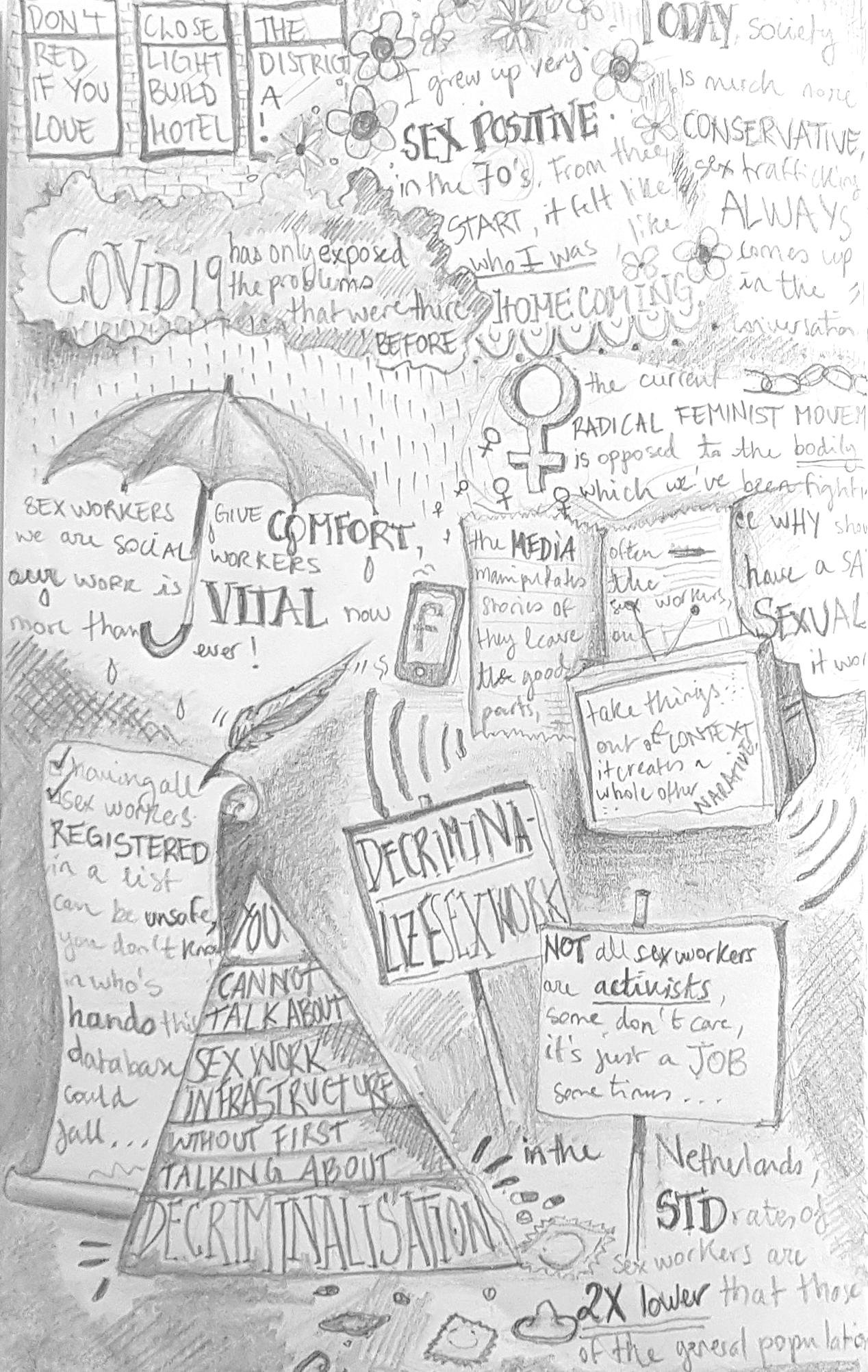
52
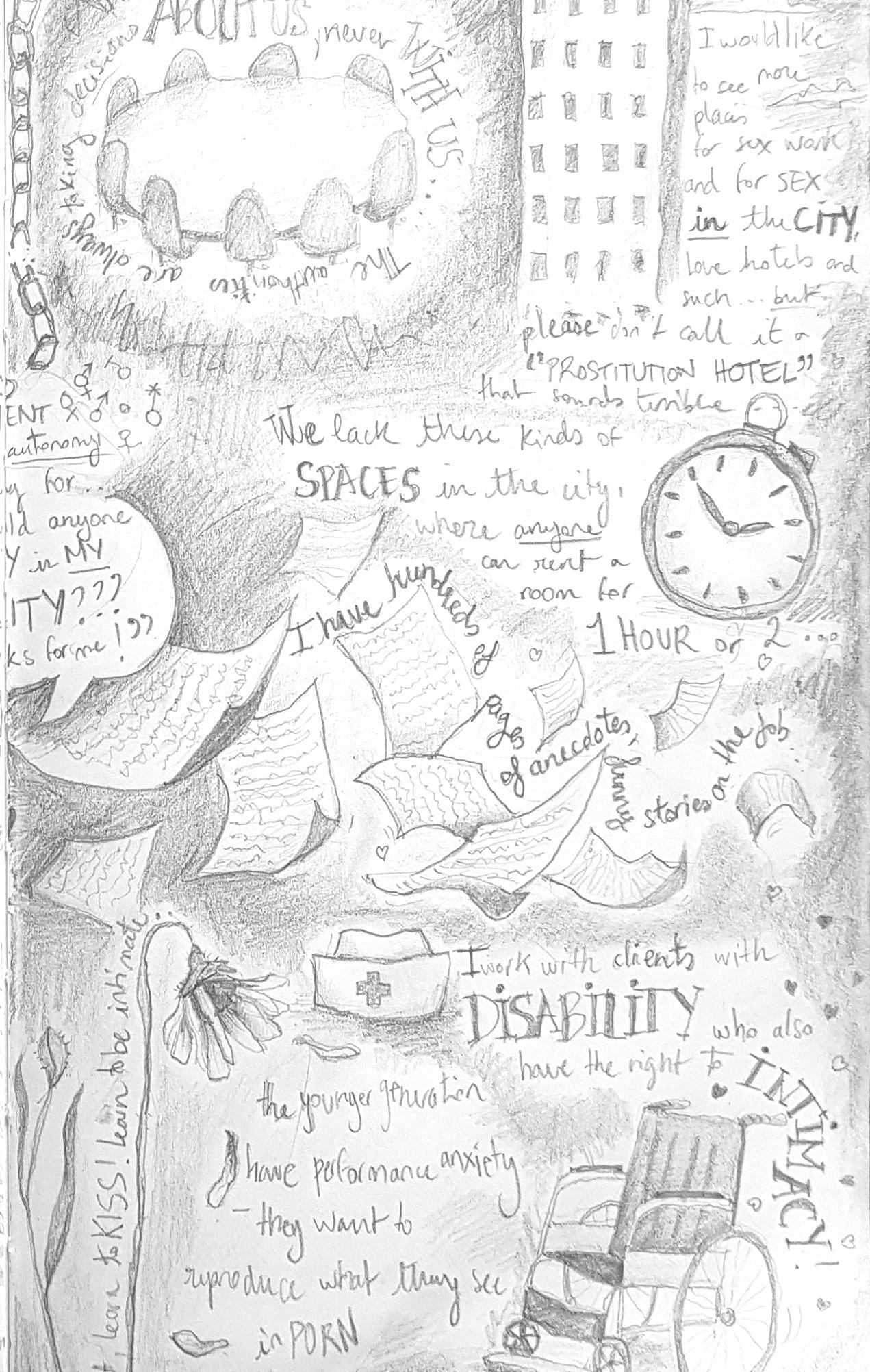
53
“don’t save us, save our windows”
54

the sex work industry in de wallen
56
VECTORWORKS EDUCATIONAL VERSION Theatro Cassa Rosso Love Club massage Cassa Rosso 4 2 2 3 3 5 3 3 3 3 4 1 1 2 6 2 222 5 44 4 4 7 7 2 5 2 4 2 3 2 4 4 4 2 3 6 Cassa Rosso strip club Cassa Rosso live shows Eagle cruise bar Dirty Dicks fetish club La Vie en Proost Moulin Rouge Banana Bar 1
work windows shut down windows sex clubs sex shops
In order to get a clear view of the situation of De Wallen and what was at stake, I decided to inventorise the existing sex work industry in the area.
Through walks, visits, talks and theoretical historical research, I was able to map out the current state of the sex work industry in the Red Light District. I categorised the program into 3 distinct types of sex work program.
Firstly, the sex work windows (in red). These were the easiest to spot, and most times hosted multiple windows under one roof. A detail which was harder to spot was where some windows had been closed - a lot of them had been converted to small boutiques, for souvenirs, chocolates, art gallery, pop up shops etc... Looking into the companies which rented out these windows, it became clear that most of the windows were controled by only a handful of rental /brothel companies. Consequently, sex workers have very little options as to who they can work for, which allows the rental companies to charge exhorbitant prices for the rental of these rooms.
Secondly, I inventorised the sex clubs. Most of these were either stripc clubs or show clubs (where sex workers are present but contact with clients is usually kept minimal), with the exception of two gay clubs, dedicated to cruising and fetish, and one massage place.
Lastly, I mapped out the sex shops. These are gaining in popularity, as they hold a purely commercial function and don’t face discrimination like sex work places would.
Observing this map, a few conclusions can be drawn as to the spatial organisation of the Red Light.
The first observation is that the Red Light program is clearly focused around two main areas: around the Oudezijds Achterburgwal canal, and around the Oudekerk. This creates two focus points in the Red Light, and concentrates all the animation in these two, dense spaces.
The second observation we can make is that all the sex work windows are placed in small clusters. Indeed, in the optic of safety and proximity, sex workers prefer to work in areas with other sex workers, so as to be on the look out for each other.
The last detail we can notice is the growing number of grey (closed) windows. Over the past few years, over 120 windows have been closed, shrinking the Red Light district and forcing the sex work program into an even smaller, denser area. Of course, the number of visitors is only growing, thus creating a hyper-saturation of the streets.
These conclusions will serve as important ingredients in the further development of the project.
57
sex
URBAN QUALITIES
Through a series of walks, sketches, photographs and conversations, I set out to dig deeper into the spatial constructions of the Red Light district.
The first outcome of this research was a nolly map of accessible places, superimposed with the different walks I took over a few weeks. Each with a different goal in mind, different arrival and exit points. Some important knots and crossing points started to become clear on the map, after naturally gravitating to them time and time again.
During these visits, I created an exercise which I called “memory walks”. This consisted in, once back at home after the walk, sitting down and sketching the points of the walk which I remembered. What came out was usually a sort of sketchy story board, with atmospheres and details as the main course. This allowed me to extract the essence of the place, and to work on a very intuitive, emotion-based practice, centered around the genius locci.
Interesting conclusions came out of these exercises. Through both of them, a same impression came out: the experience of walking around felt incredibly passive and linear, at times suffocating and uncomfortable in the tiny alley ways (pictured left), and times exposing and vulnerable. Like in Nieuwmarkt, which was one of the only “breathing spaces” of the area, but which felt very empty and cold. Taking a closer look at the nolly map, I realised that, despite looking porous, the city was in fact closed and consited of a linear, narrow street network.

58
a nolly map
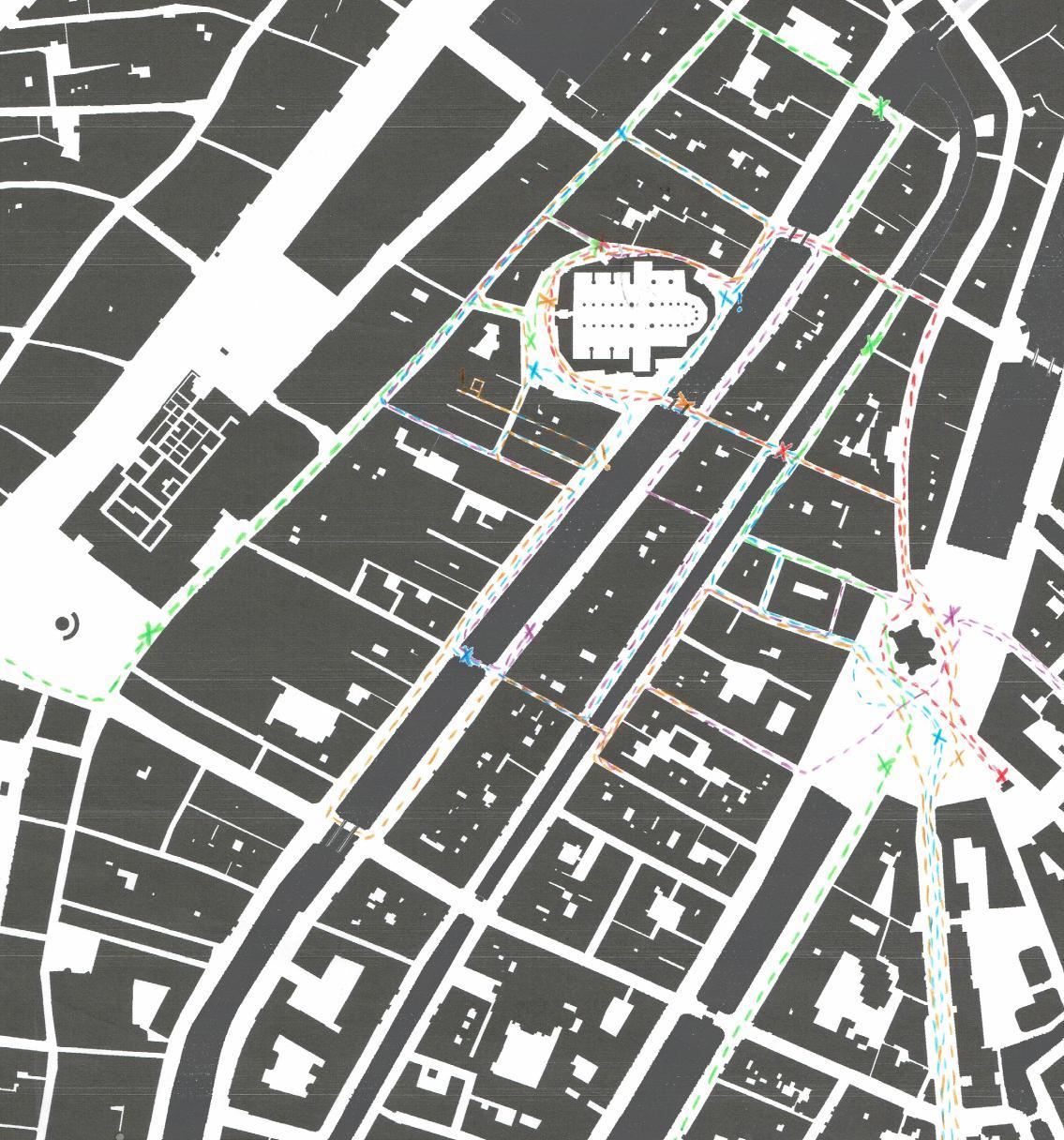
59
memory walk
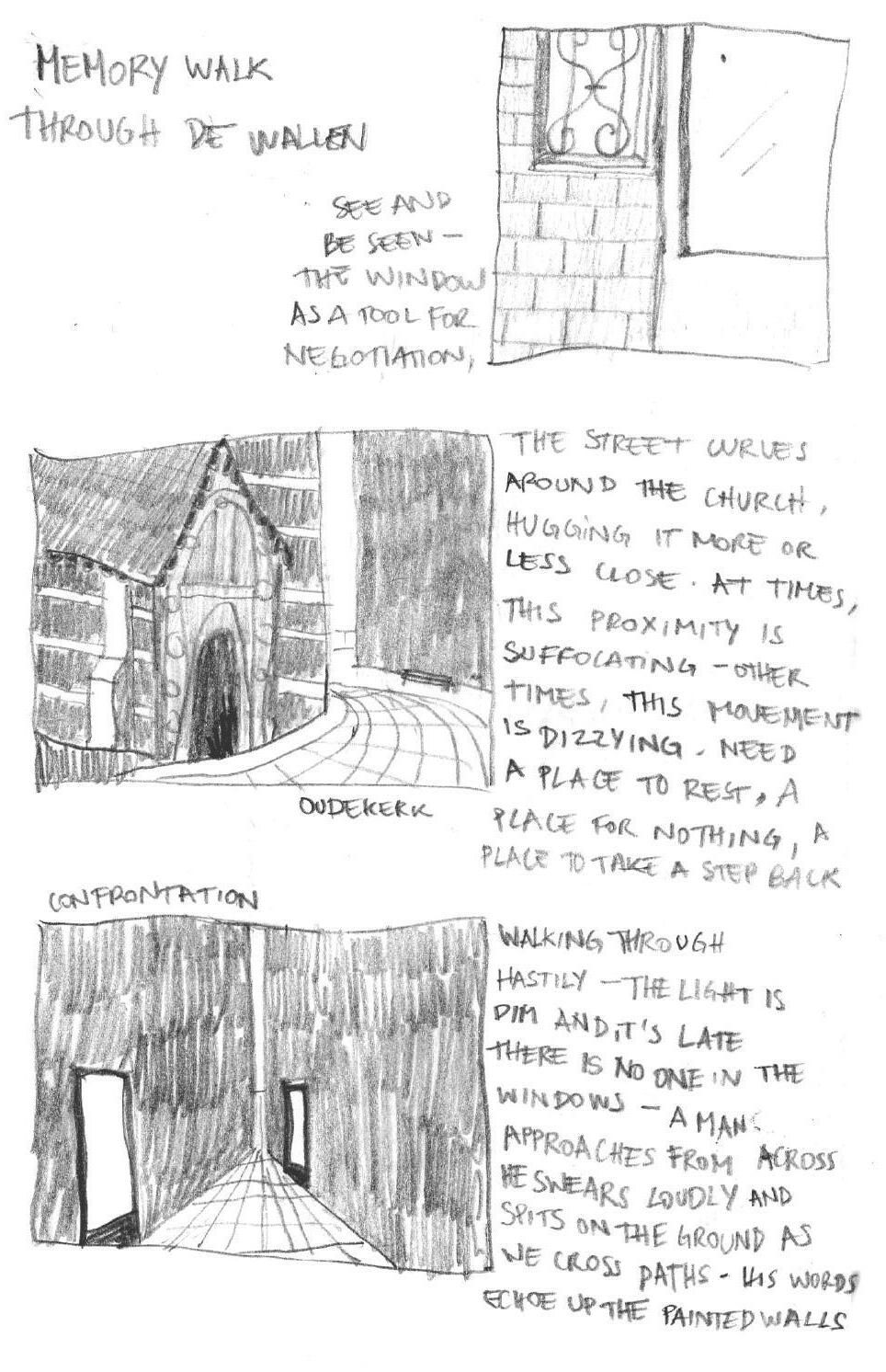
60 a

61
a study of the blocks

62
A study of the blocks became necessary to understand how these streets were formed, and what stood behing the mass of the facades.
When observing the heights map of De Wallen, one can observe that the blocks are, for the most part, constructed around the same principle, high narrow “wall” of houses around an inner green courtyard. However, in some narrower blocks, the courtyard is not present and the block is very dense.
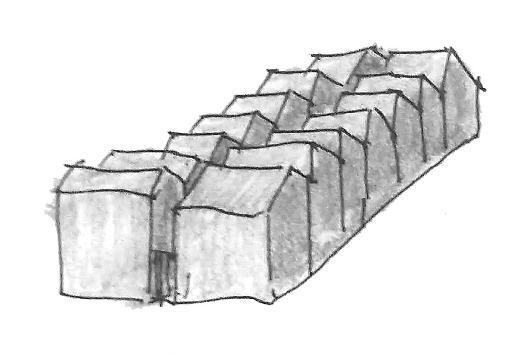

On the largest blocks, the inner space is so large that the green courtyard also hosts a variety of lower program with large industrial and storage buildings, to maximise usage and still allow for proper sunlight.
These larger blocks come out as private breathing spaces with roofscapes intricate enough to make any Assasin’s Creed fan blush, and which hold immense potential for publicization if given back to the city...
63
ARCHITECTURAL QUALITIES
After looking at the urban specificities of De Wallen, it was time to dive into the architectural details which composed the windows.
To begin with, the visual aspect of the Red Light district holds a very familiar aesthetic. Red curtains, dark green wooden window frames, compositions of delightfully crooked windows and the glow of the red lights all signal the program and make the undeniable charm of the neighbourhood.

Further than the aesthetic aspect of the windows, one can understand the importance of the window typology and the role all elements play in it. The specialty of this typology resides in the window itself and the space which stands behind it: it allows the street to extend into the house, and the house to extend into the street, creating a porous facade which allows sex workers to stay safe behind the glass. This inbetween window space holds an inseparable relatonship to the street, allowing workers to constatly scan passers-by in the street and asses any potential danger, be looking out for their fellow workers in the same street etc...
From the side of the client, being able to have this very intimate view while still walking in the street is like a form of foreplay, extremely important is this form of fast-paced, direct sex work.
64
a familiar language
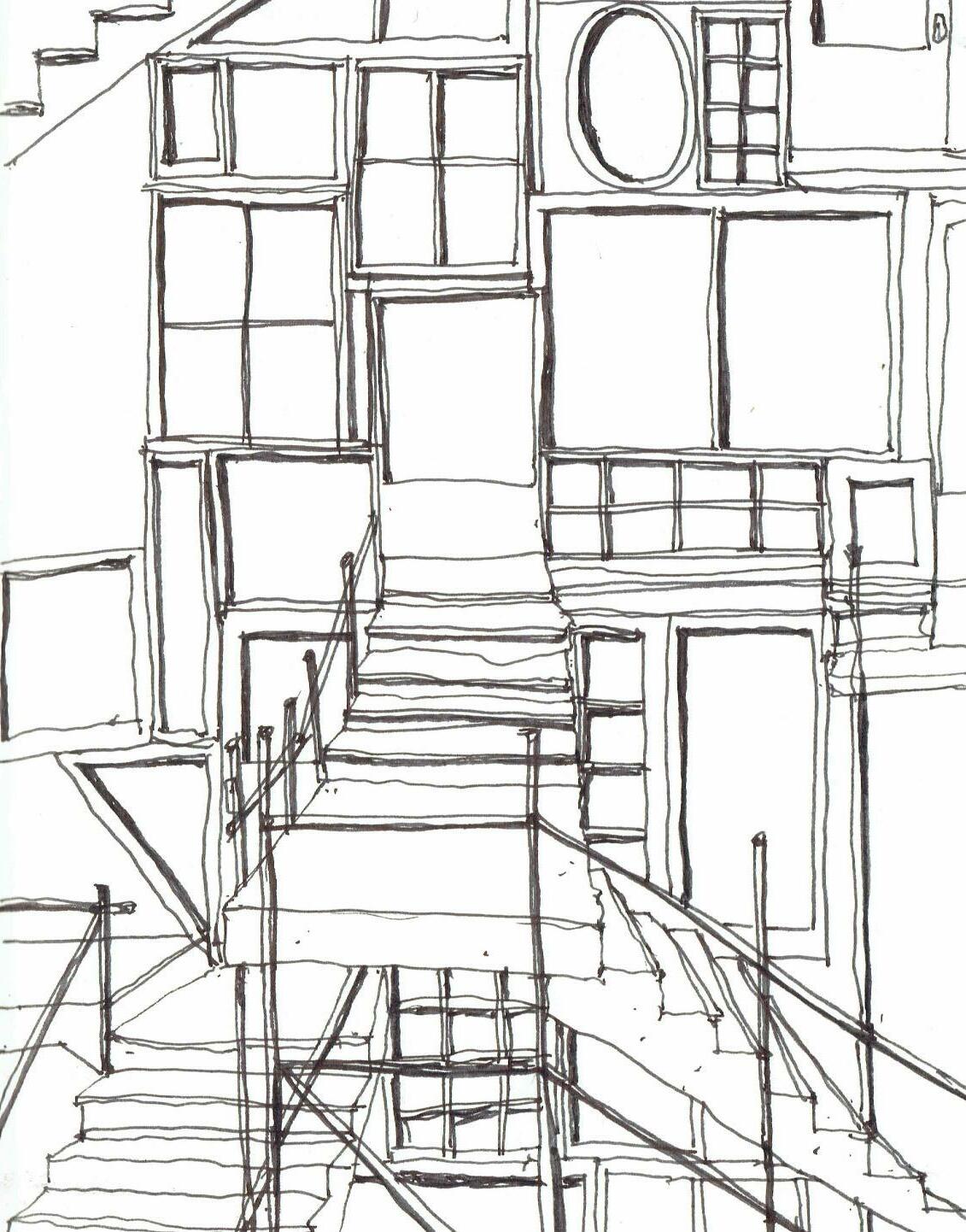
65
no foto: a hand-drawn archive
“No photo”: an analog archive of twentyeight windows in the Red light district. This collection of carefully hand-drawn images pays homage to Amsterdam’s explicit sex work architecture, in an effort to analyze and preserve these windows in all their truth. Here the focus shifts to the architectural settings surrounding the sex workers, and slow and attentive observation reveals the many layers and compositions of these typologies. Details of alarm systems, closed camera circuits and window spikes contrast with the intimacy of soft white net curtains and glowing red lights. The constant surveillance of the body in public space, a daily struggle for anonymity and visibility...
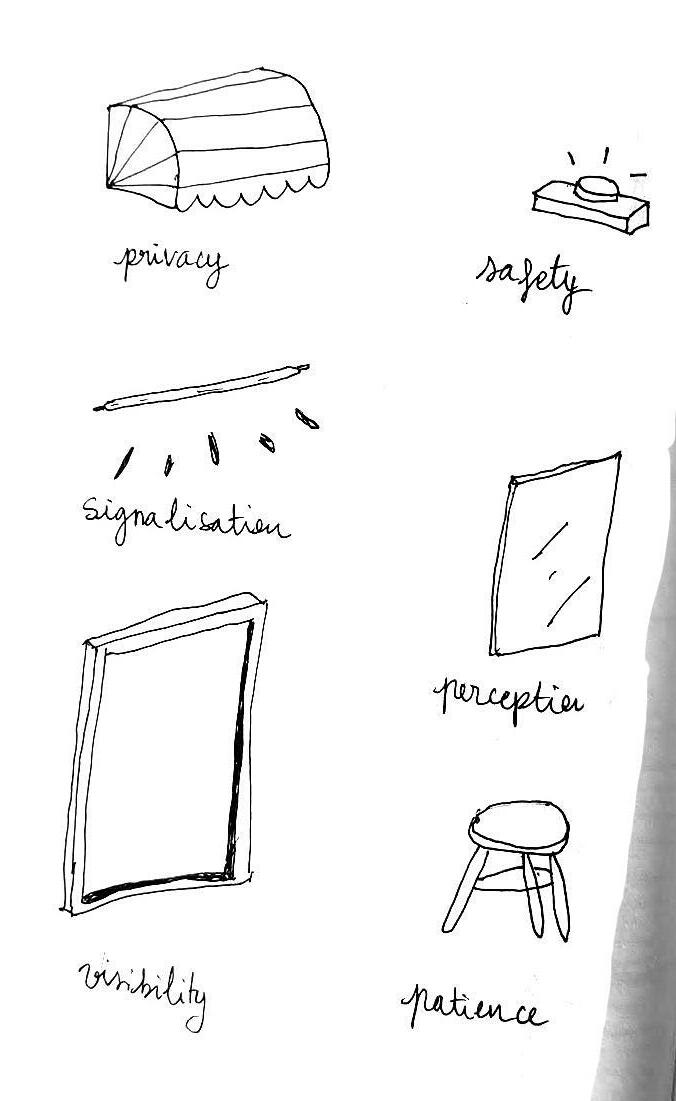
66

67

68

69

70

71
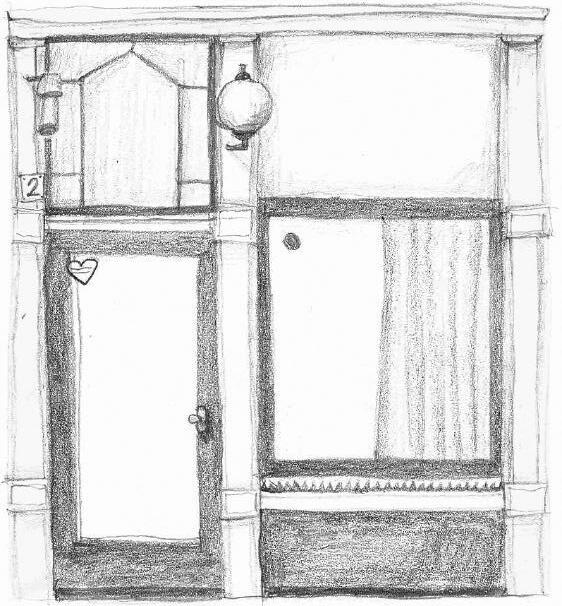
72

73
a conversation with Paula
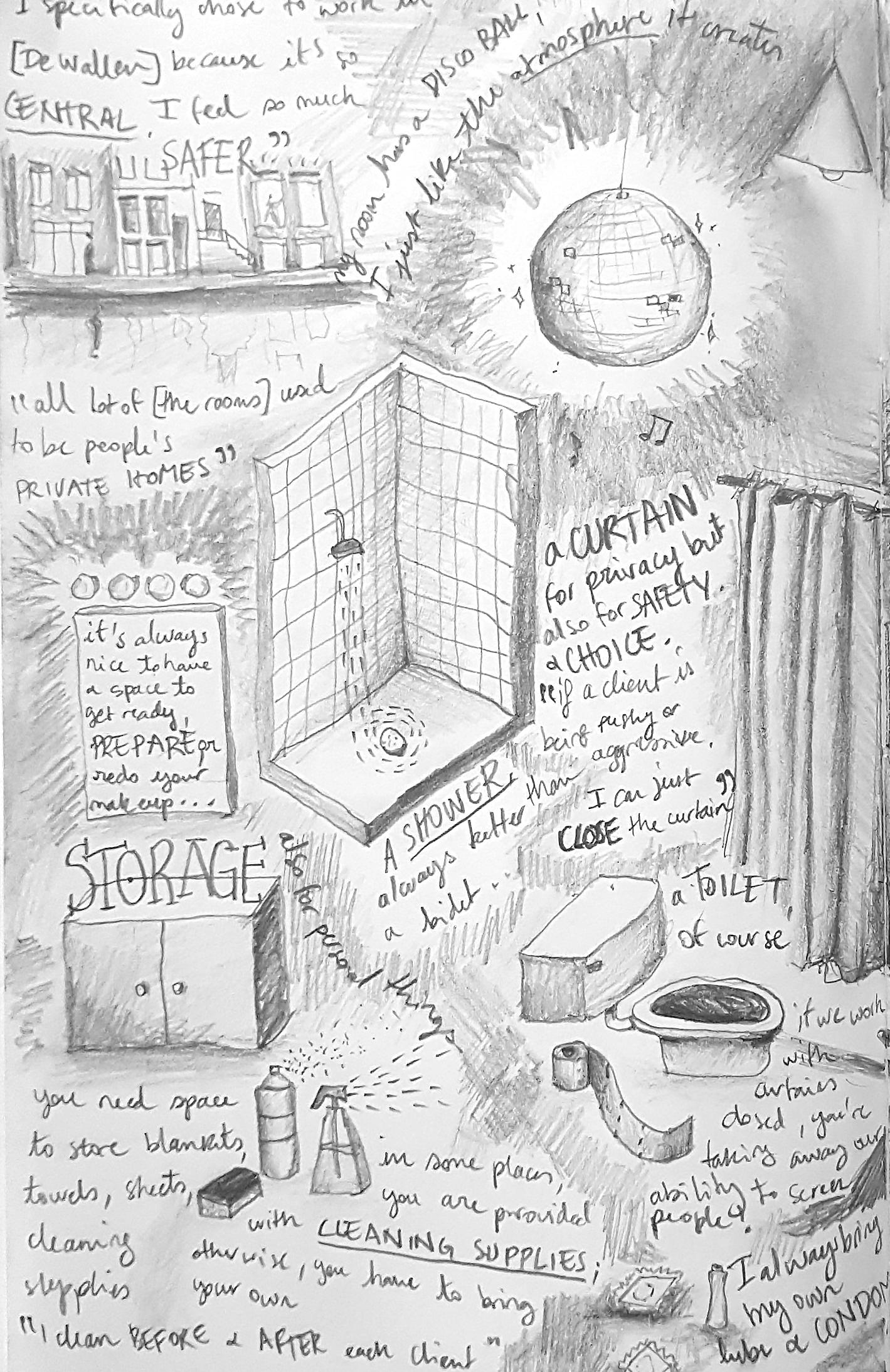
74

75
a sensual disconnect
Through conversations and interviews with sex workers, it became apparent that a “sensual disconnect” was felt. Indeed, the physical setting in which some windows and bedrooms were set did not always match with the intimacy of the services provided by the workers. This often resulted in uninviting, cold and sterile work spaces which lacked personality and comfort. This observation later became a key point to be improved through the project.
Olympia , Edouard Manet (1965) and the inside of an Amsterdam Red Light bedroom, collage.


understanding scenarios
78

EXISTING SCENARIOS
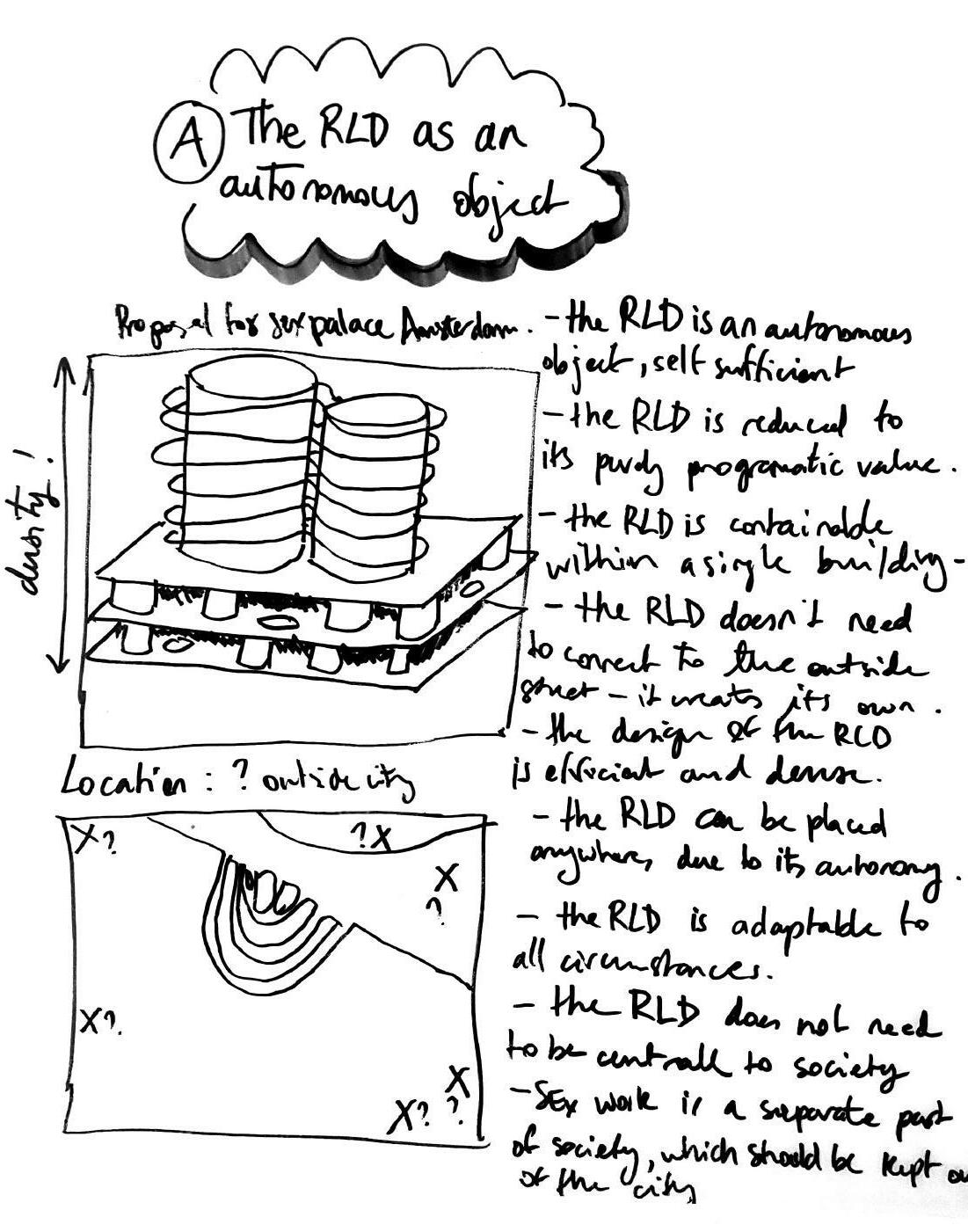
80

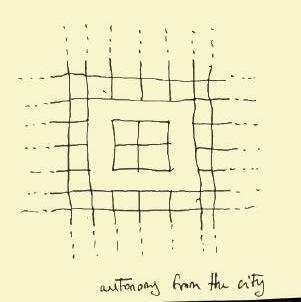
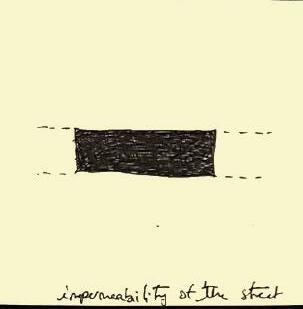




81

82



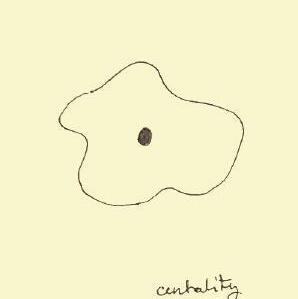



83
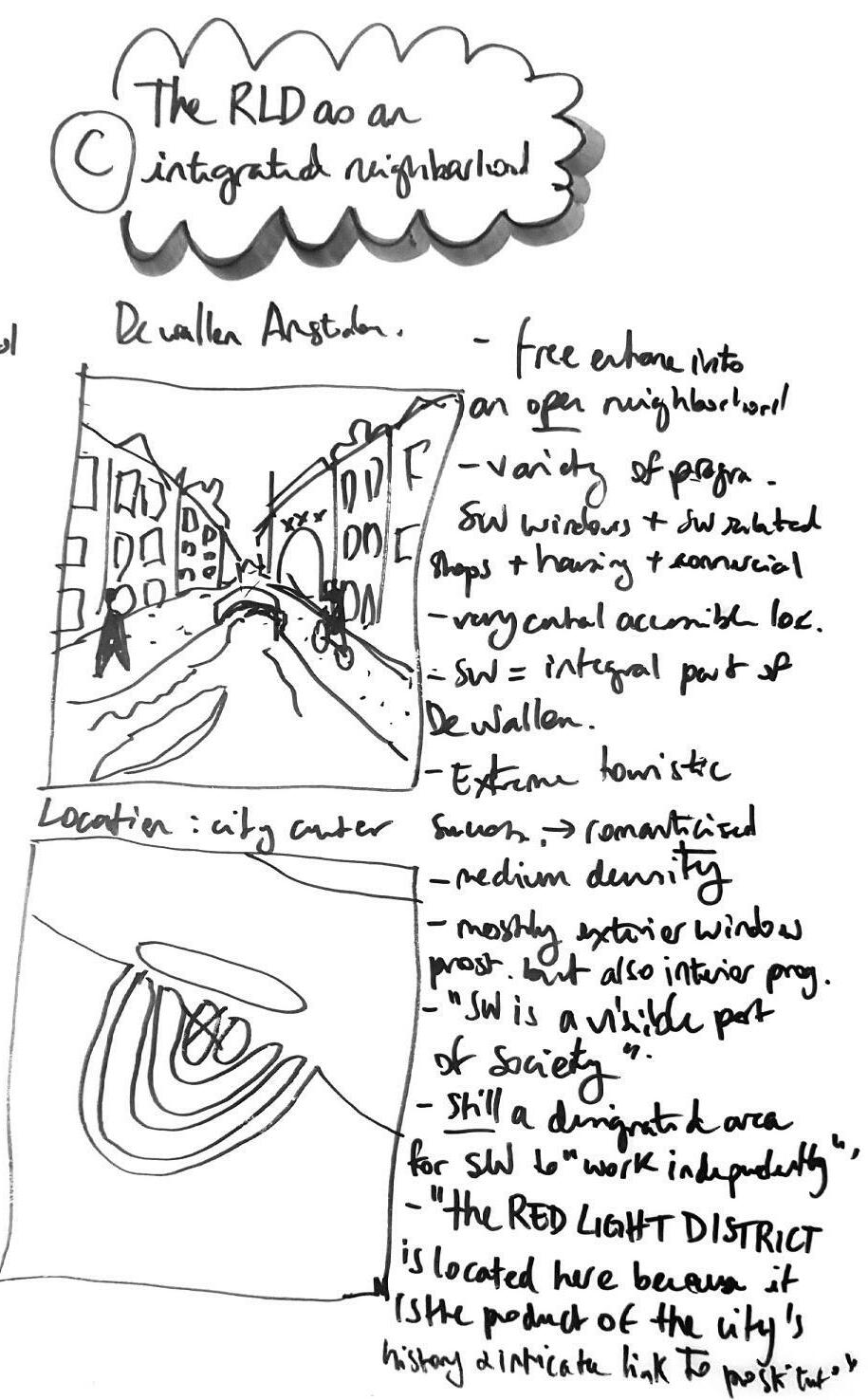
84


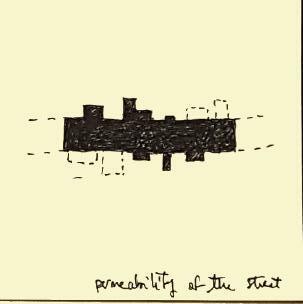
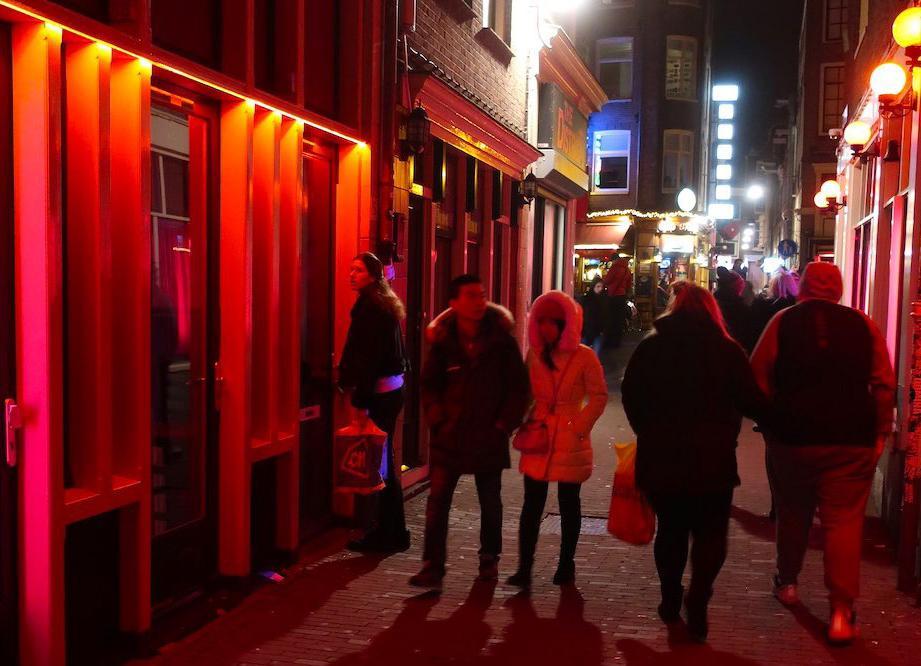



85
WEIGHING OPTIONS
scenario 1: peripheralisation

pros
* moves “bad” tourism away from city center
* more investment opportunities on city center
* gives “cleaner, quiter” image to the city
* reduces crime and human trafficking in the center
* more control since sw is in 1 municipality owned building
cons
* completely segregates the sw population to outskirt of city
* disregards relationship between sw & city
* peripheral area = less safe
* denies & erases importance of history & social fabric of de wallen
* not enjoyabe for costumers =less revenue for sw
* lack of independence for sw to work in 1 controlled area
86
scenario 2 : hypernormalisation
pros
* moves “bad” tourism away from city center
* facilitates access to sw for costumers in their neighbourhood
* less “flashy” approach to sw * could work anywhere in Amsterdam or the world
cons

* looses excitement of RLD
* does not guarantee privacy for costumers
* less safety guaranteed by smaller number of sw
* harder to control?
* follow’s municipality’s narrative of “we need to dissolve the RLD”
88
scenario 3 : resexification
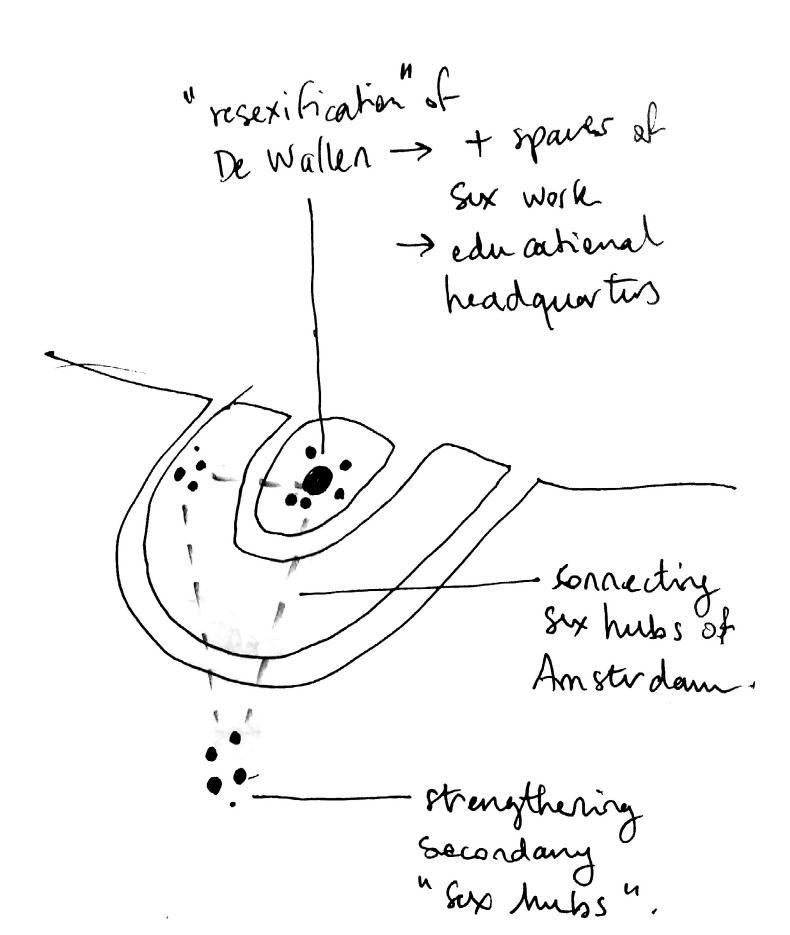
pros
* allows for better inclusion of sw in society
* honors and respects the role of small communitites in de wallen
* opens up dialogue on what to do with free vacant spaces
* prevents further gentrification in de wallen
* gives + representation of sw (through union / headquarters) on a global scale
cons
* remove “quick & cheap” tourism
* does not turn de wallen into calm historical village
* is a sex filled city center for everyone?
90
resexifying De Wallen
92

SITE
VECTORWORKS EDUCATIONAL VERSION
Many factors came into play when choosing our area of intervention. Firstly, we had previously learned that it would be more beneficial for the sex work community to remain in the city center, and more specifically in De Wallen. When working in such a central and public area, workers are an integral part of the city’s daily life and are able to work in safer, more visible conditions. Furthermore, the location of this projet also holds a strong message: sex workers belong in the city, and the city belongs to sex workers. Such a position allows sex workers to claim back the city as theirs.
VECTORWORKS EDUCATIONAL VERSION
94
The specific choice of intervening in the Blauwlakkenblok for this project is a strategic one. Indeed, our previous observations of the city had led us to conclude that De Wallen (here in light red) was saturated and slowly shrinking - a simple solution to this issue was to expand the Red Light district by adding sex work program to a block on its outskirts. An strategic location was found, within walking distance of Dam Square, Oudekerk and Nieuwmarkt (here in dark grey). Consequently, the Blauwlakkenblok was added back to De Wallen , becoming an important knot towards and inside of the resexified Red Light District.
95

96

97
BLAUWLAKKENBLOK
Book printing factory Offices
Located on the edge of the Red Light district, Blauwlakkenblok is one of the two largest block in De Wallen. It takes its name from one of the small alleys which cut through it, Blauwlakkensteeg, which, back in the day was used for the transport of blue lacquer shipments from the canal to the fabricdyeing facility located inside the block. As a result of this program, the block had a very specific organisation: on Warmoestraat were the highest, richest houses of the block, with beautiful facades as this was were the commerces were placed. The inside of the
block could be accessed through a tunneldoor. On the inside, a low rise, wide span program of industry and storage creates intricate rooscapes. Small alleyways connect the inside of the block to the neighbouring canal.

Today, the industrial program is gone and has been replaced by various, non-housing programs, such as an art gallery, a dance studio, office spaces etc... The outside crown of the block remains mostly housing and commercial. The block now holds the status
of being UNESCO heritage, making it impossible to interviene on any of the outer parts. However, the inner parts are not affected by this status, and can therefore be interveined on (here in orange). The block also holds beautifully lush, green courtyards which provide a well needed break from the streets’ noisyness.
98
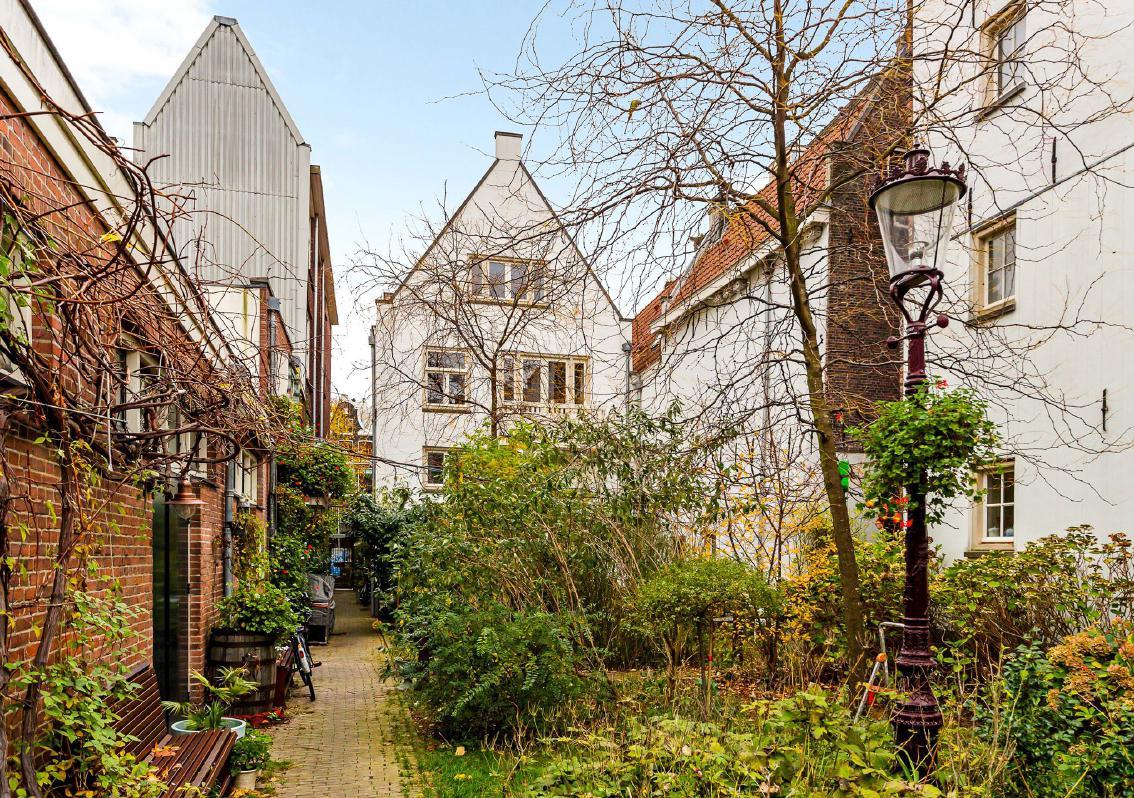
99
searching for densification

100

101
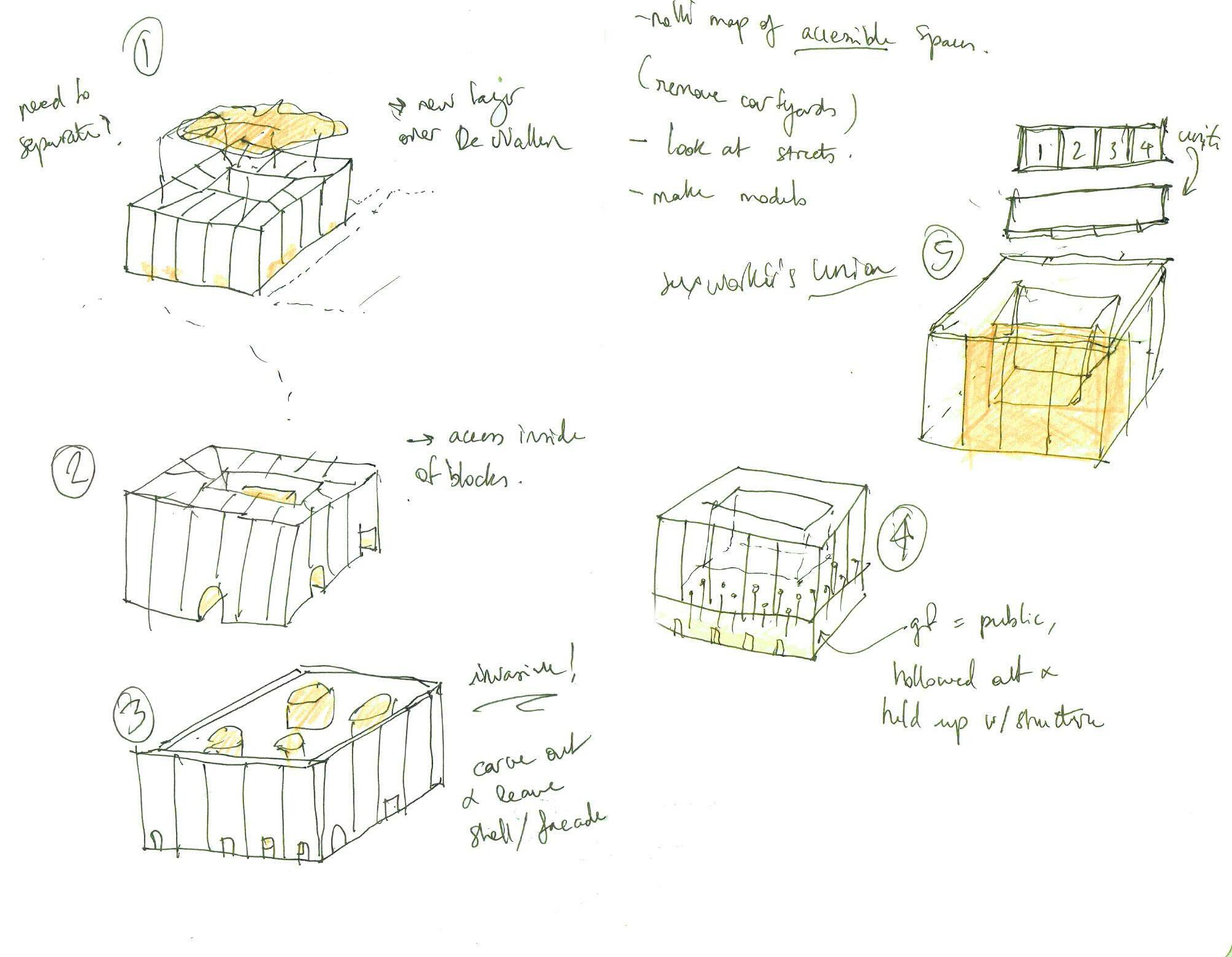
102

103
• creating space for new program (headquarters for sex workers, educational program, new typologies of sw spaces)
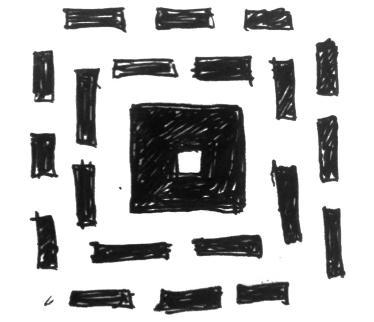
• generating more usable m2 = impact on lowering rent


• offering choice of circulation to visitors, sex workers, residents etc...
• providing more privacy to clients = more time and space for negotiation

• allowing breathing spaces in the dense city center
• de-densifying the streets of crowds
104

105
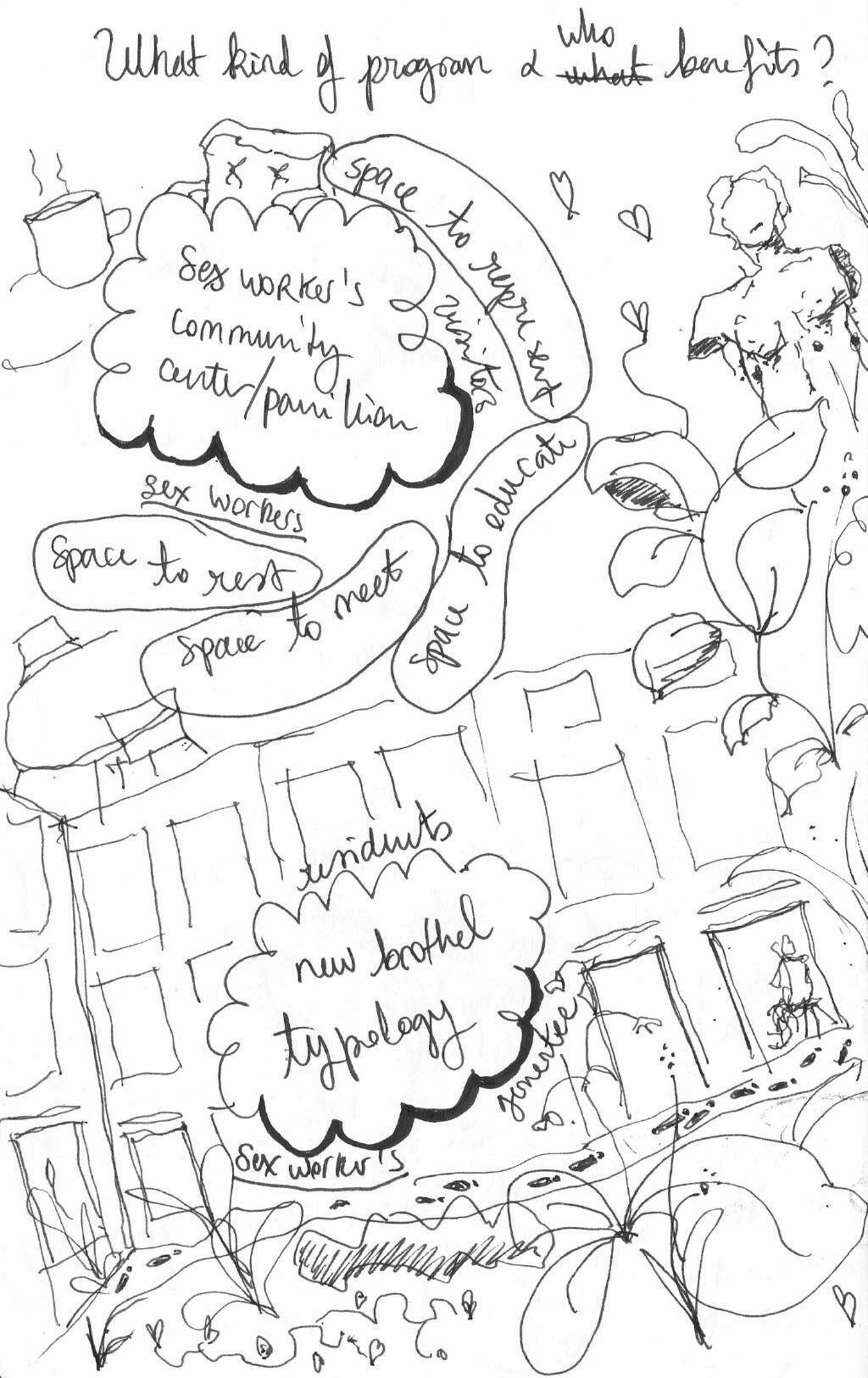
106
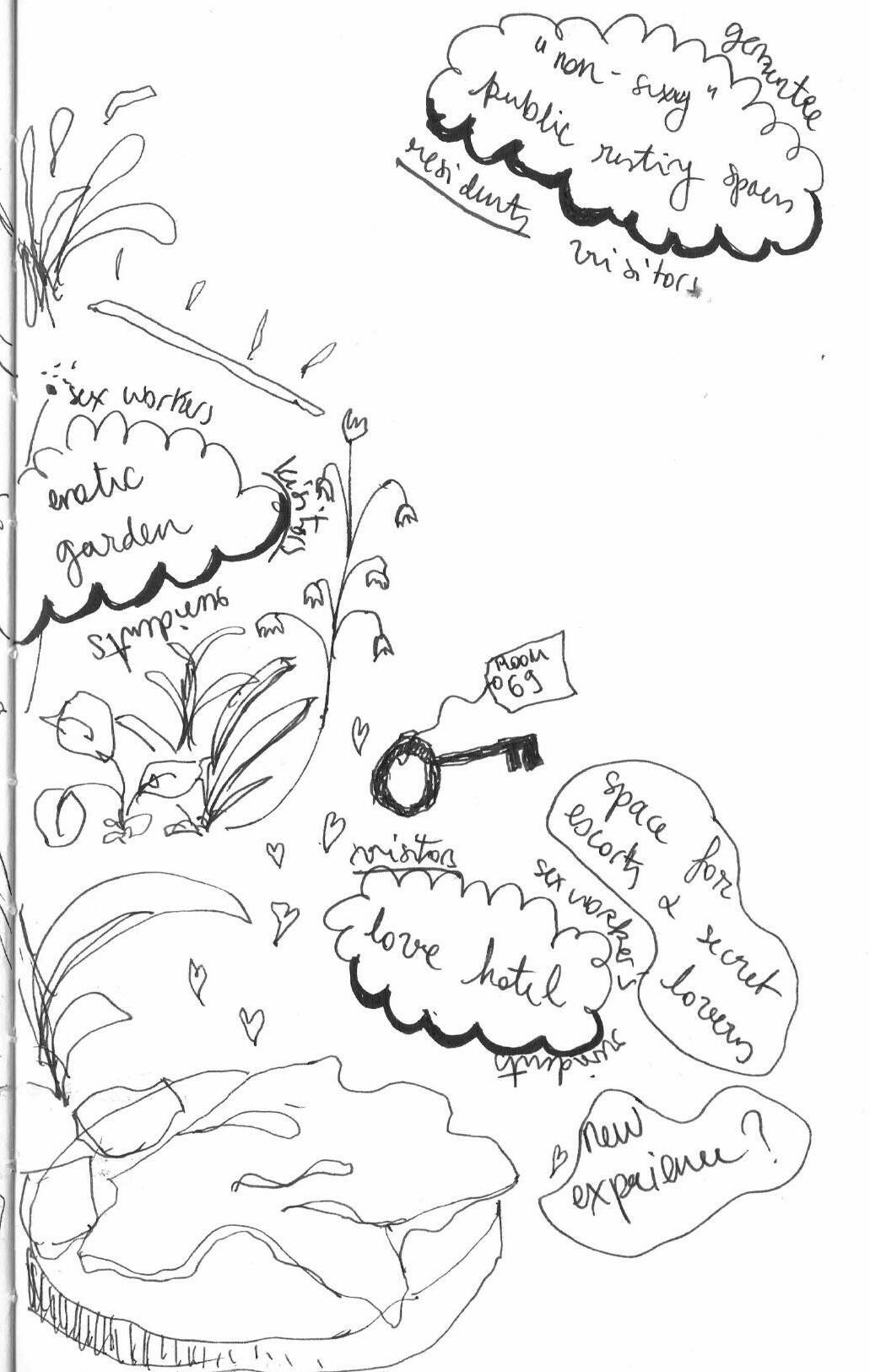
107
PROCESS & ITERATIONS

108
A. existing




removing
adding
109
B.
C.
small, intimate bed-rooms and living-rooms in clusters and different heights

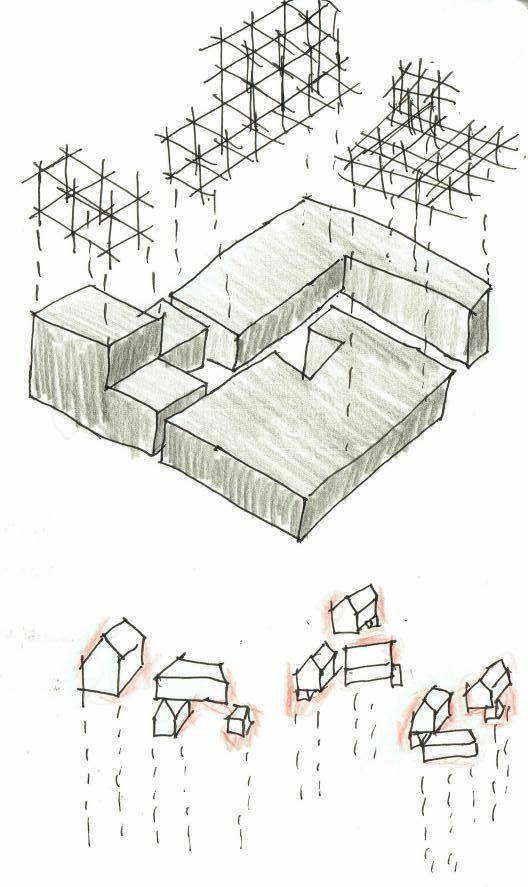



a light, metalic 3D grid structure to allow density and growth
a strong, stable base: the sex workers’ community center in the heart of the block a street-like disposition of the community center blocks; an organic circula tion to the top of the blocks


111
viable solution


112 a
bedrooms


rooms”

113 “living
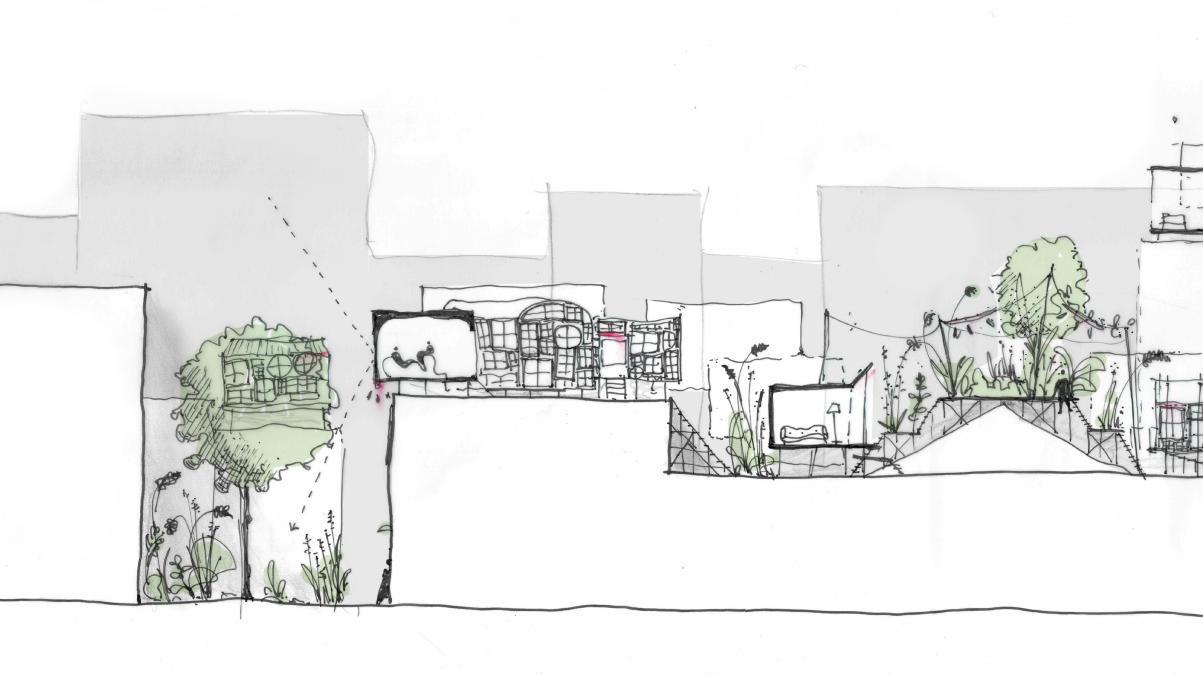
114
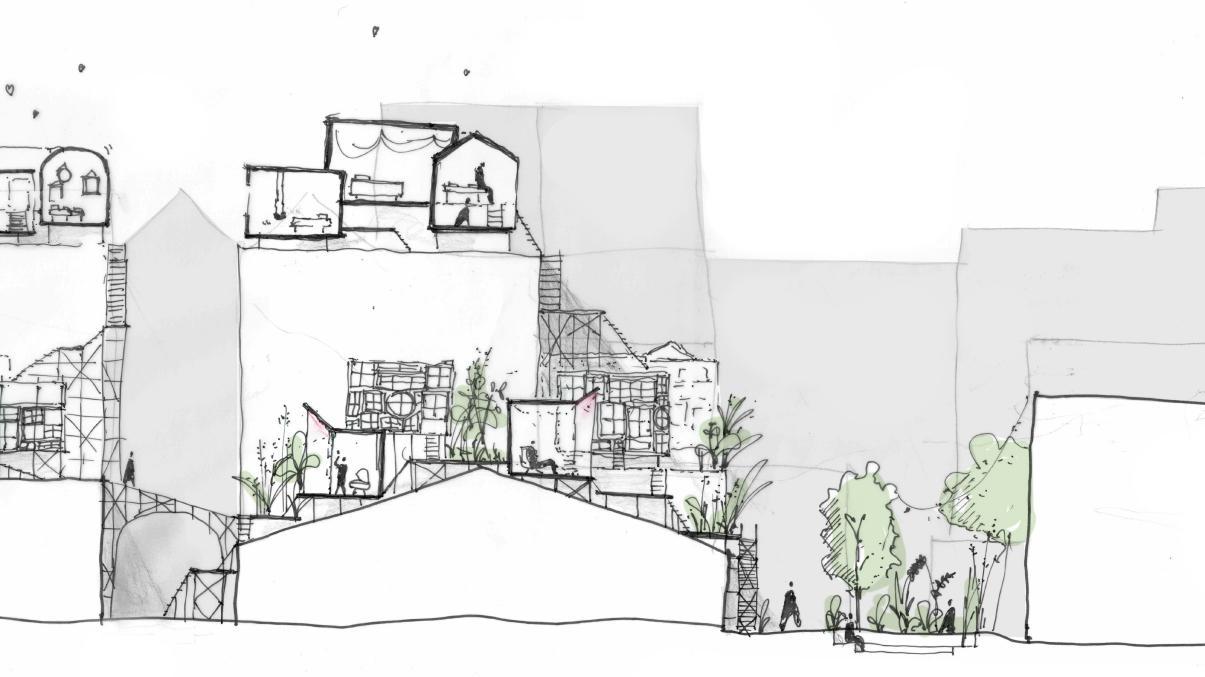
115
leading principles
removing sex work spaces from a high-consumption, commercial context
more dynamic street skyline; less passive visitor experience



creating a layered, sensual experience; giving more privacy & intimacy to workers and clients
less vis-a-vis; more breathing spaces & privacy
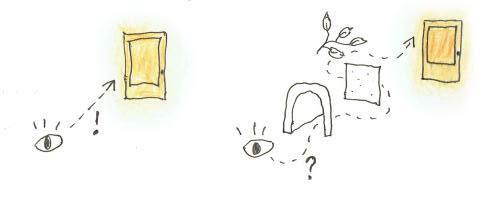
116
respecting & using the existing; adding a new historical layer

reversing the space usage; most of the time is spent waiting!
relevance of space during the day and night - not a dead space! different typologies - different kinds of sw
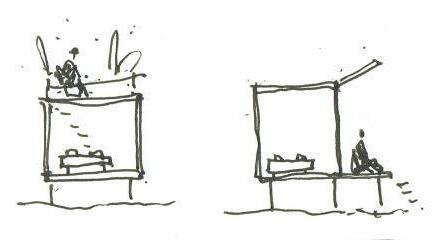



117
an intervention
118 xxx:

STORY
XXX is an architectural invitation to rediscover sensuality and intimacy, in the heart ofAmsterdam’s historic De Wallen.
How can we create a more balanced solution which listens first to sex worker’s needs all the while benefiting the city and its inhabitants? How can we learn ways to rethink a public space which has been overwhelmingly designed for the heterosexual masculine fantasy?
Light district sees over 8 million visitors a year; the size of the area combined with the lack proper infrastructure results in a saturated and over-capacitated neighbourhood.
The municipality of Amsterdam sees in this an opportunity to push an intensive gentrification project meant to close down windows, remove sex work and bring in a different kind of tourism, by means of an alarmist Red Light narrative.
In an attempt to relocate sex workers, the municipality has been developing an ill-conceived and insensitive “erotic hotel” which would push the sex work community outside the city. Consequently, sex workers are faced with a myriad of uncertainties.
Project
XXX playfully provides a fresh answer to the city’s current controversial questioning on how to deal with its evolving Red Light district. This intervention unapologetically gives back the city to sex workers, by inhabiting and densifying the inner roofscape of a typical Amsterdam city block – Blauwlakkenblok – which once hosted a myriad of sex work windows. It recognizes the variety of sex worker’s needs by providing qualitative workspaces to sex workers as well as communal facilities.
Context
De Wallen, a central neighbourhood in the heart of Amsterdam, is notorious for its rowdy atmosphere and its confronting windows – and even more so for the women standing behind them. The Red
Guided by an intuitive artistic approach, a sensitive collaboration with Amsterdam’s sex work community was born. Through a series of intimate conversations with sex workers and meticulous observations of the area, precious details, stories, needs and dreams came out as the building blocks for our project.
By the nature of its design, XXX alternates intimate courtyards of fresh vegetation, delicate lightings and layers of flowing veilings with larger, breathing and resting public spaces for the city.
The end result is a project that offers sex workers and the city’s users a delightfully slow- paced, mysterious Red Light experience, and honours the key role sex workers play in our society.
120

121
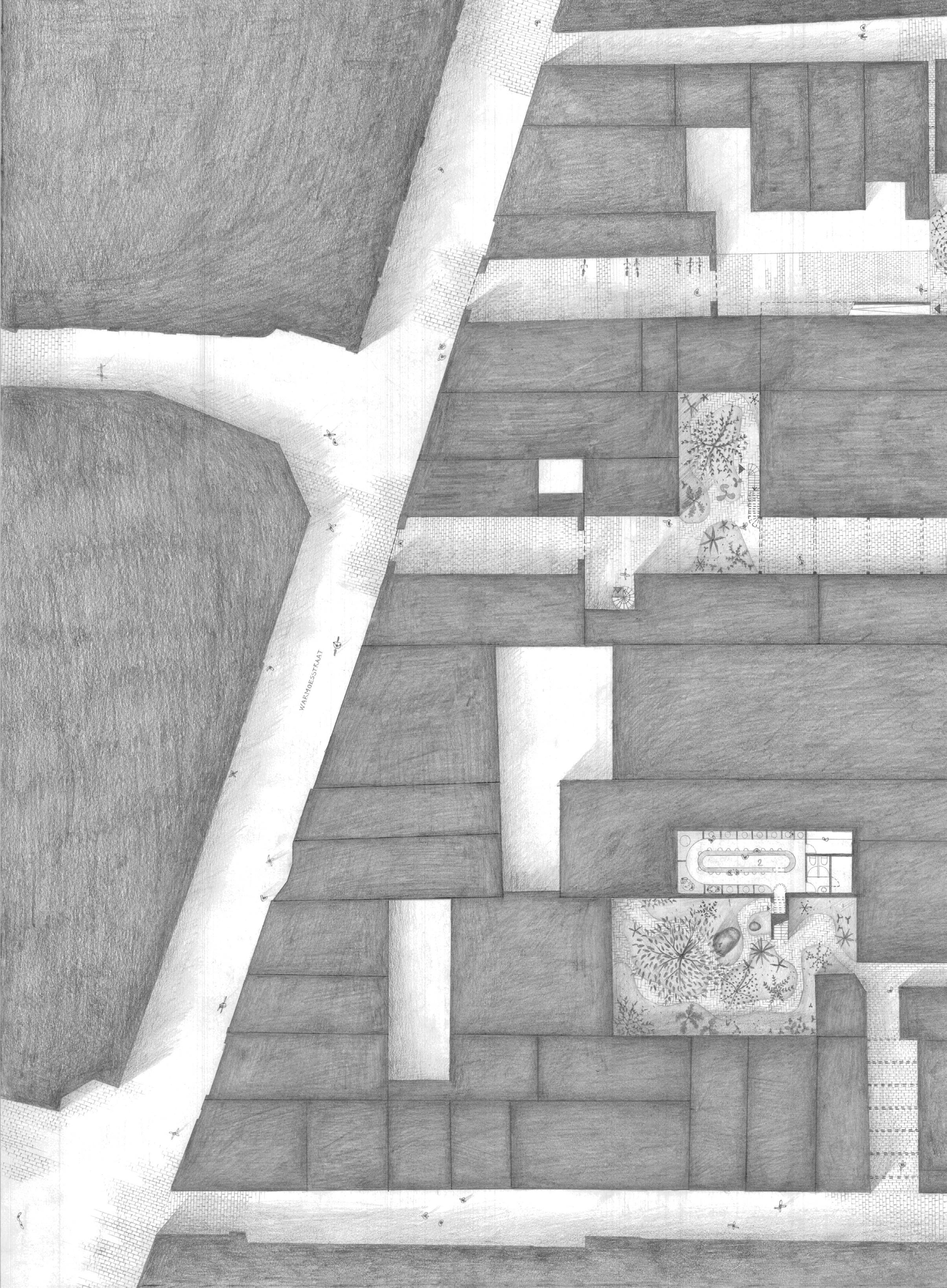
122

123
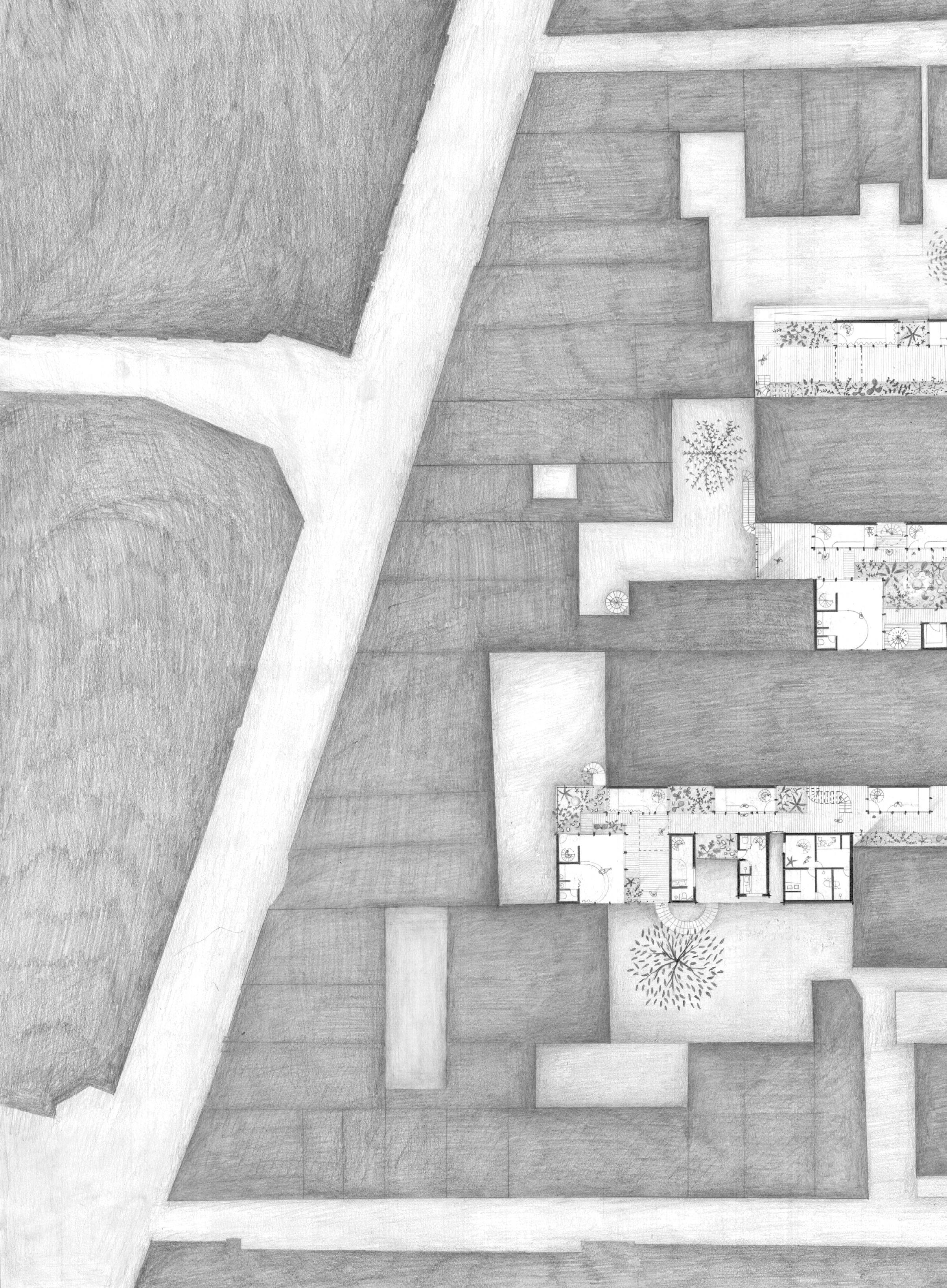
124

125
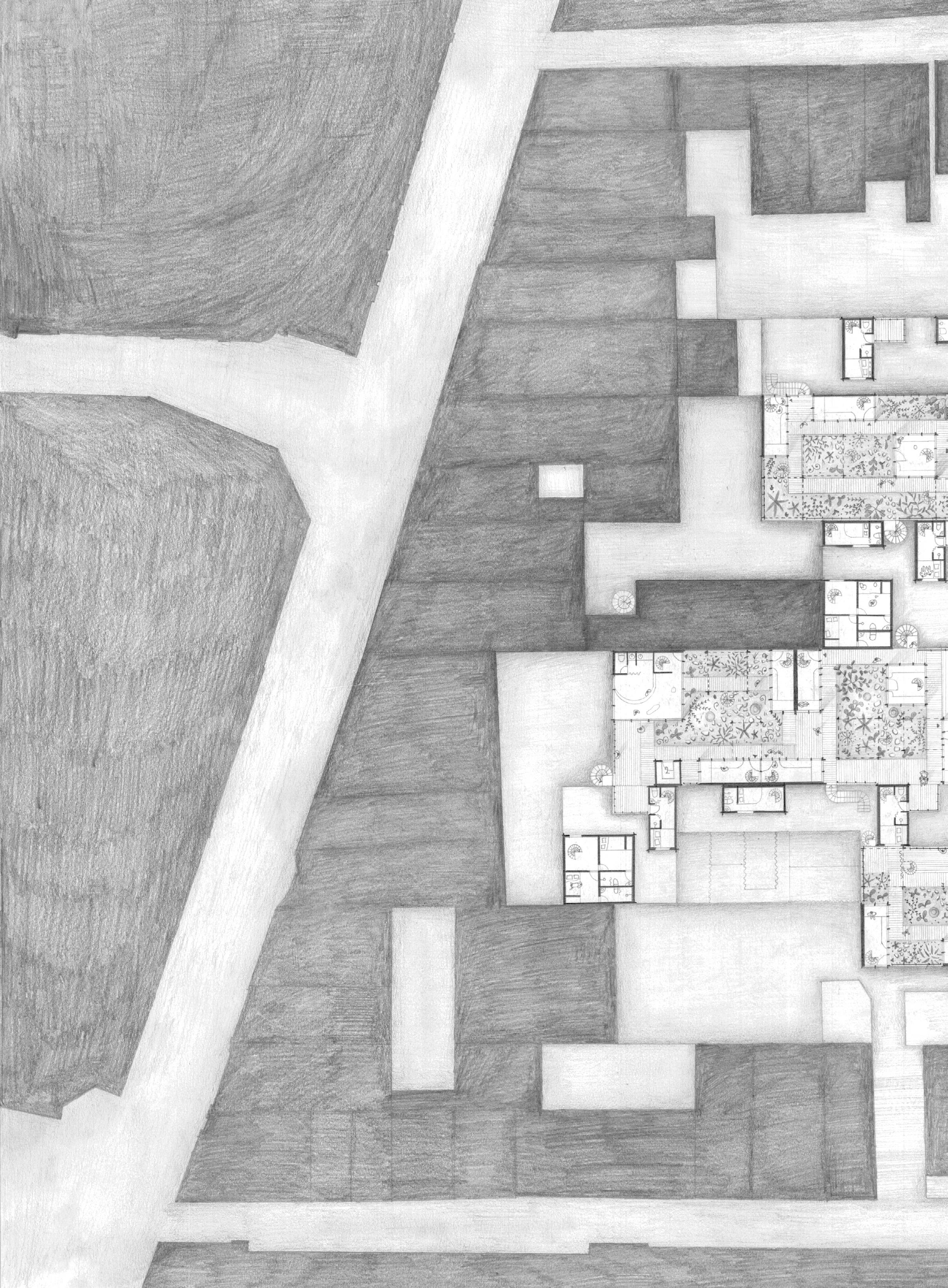
126

127
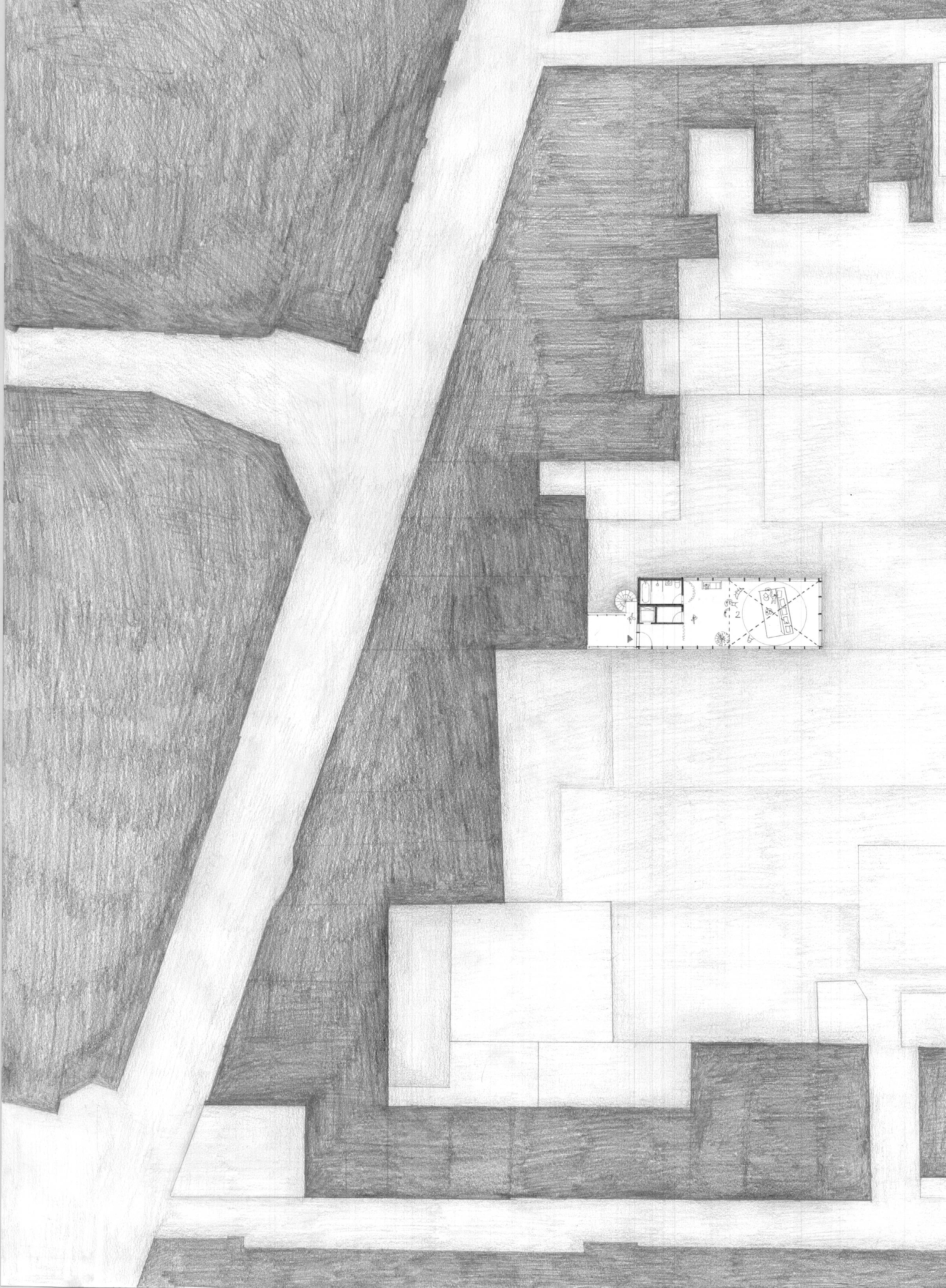
128

129
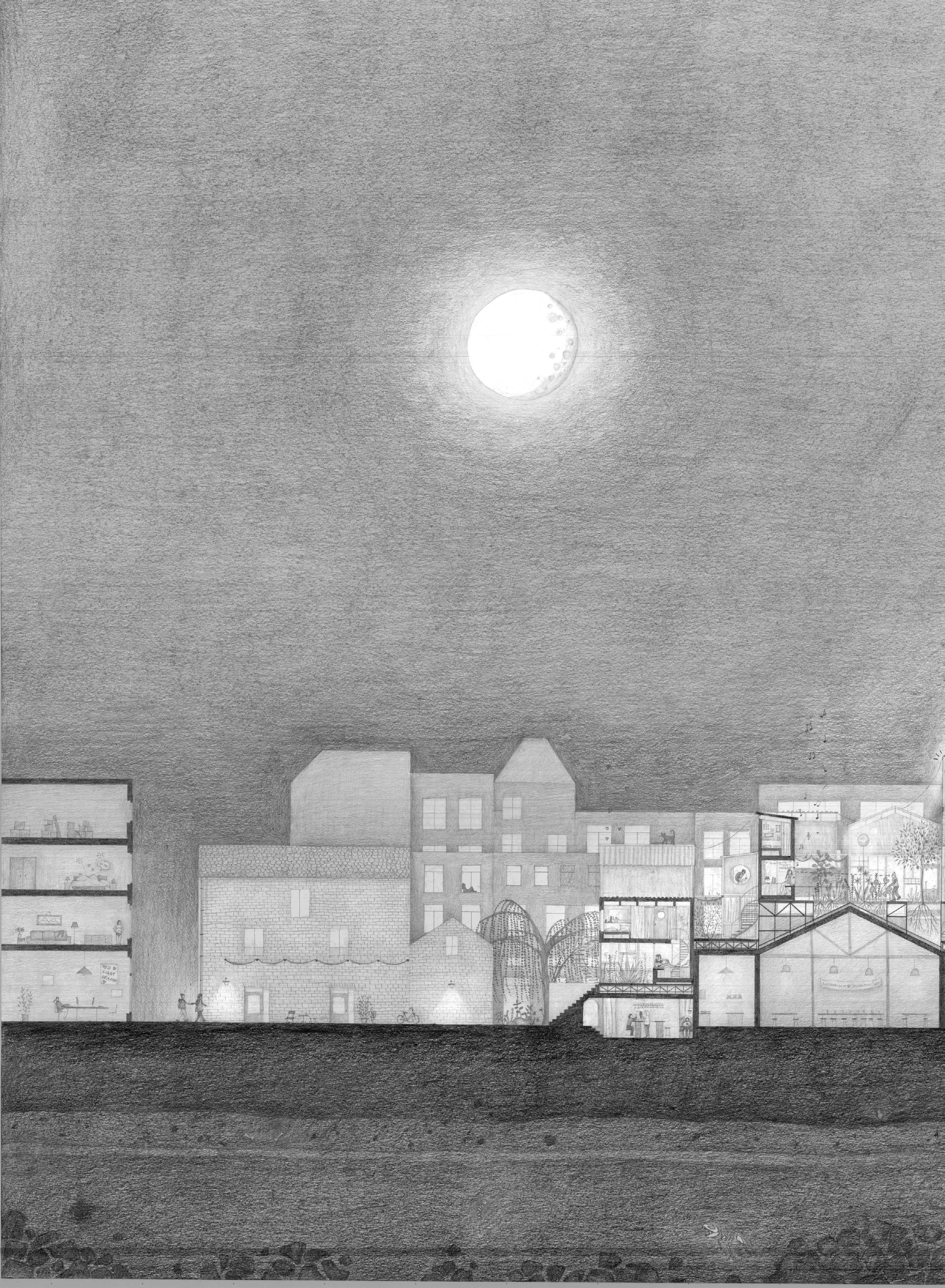
130

131
Detail of the section through XXX; a soft, integrated access from the street, through the alley, up to the project.

132
133
Center detail of the section through XXX; the intervention consists of a new layer added to the rich existing context. Small pods are created as workspaces for sex work ers, aranged around lucious courtyards which provide privacy.

134
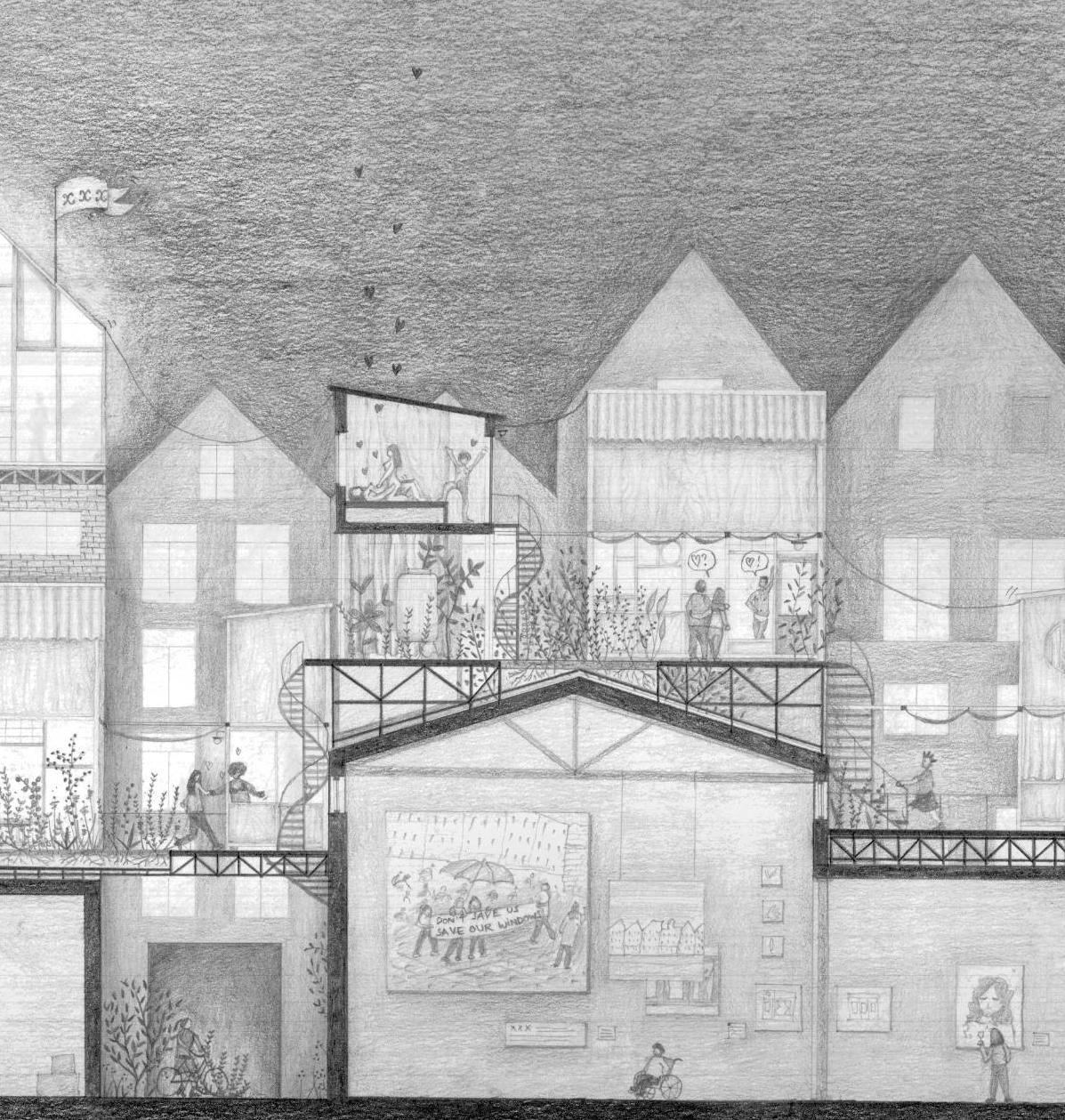
135


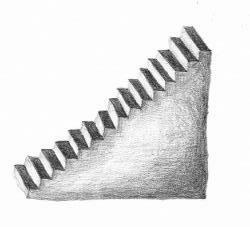
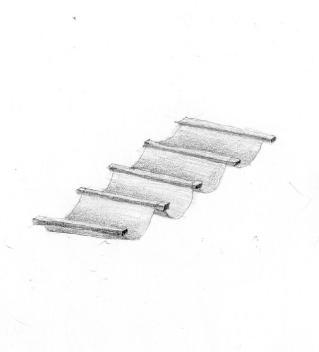
136
A true, characteristic story is created on the way to access the project. Veilings serve as signaling of the project’s presence, and dampen and soften sounds in the narrow vertical alleyways. Once having passed this secretive access, the visitors go through a fresh, slow winding, luscious secret garden, almost as a purifying step after walking on the busy street. Finally, the stairs are spotted (varying according to their context) and the project can be revealed.

137

138

139
From the street, the project stays discreet and is only pronouced by a crack in the block and a bright, flowy veiling struc ture. Naturaly, curiosity is aroused and the choice can be made to discover the inner block.

140
141
Once have climbed the stairs, the visitors can discover a village-like structure of small, cozy wooden houses, destined to wel come sex workers and their lovers. Organised around greenery and wooden pathways, the project allows for the public street to continue on top of the exsiting program, providing calm and privacy.
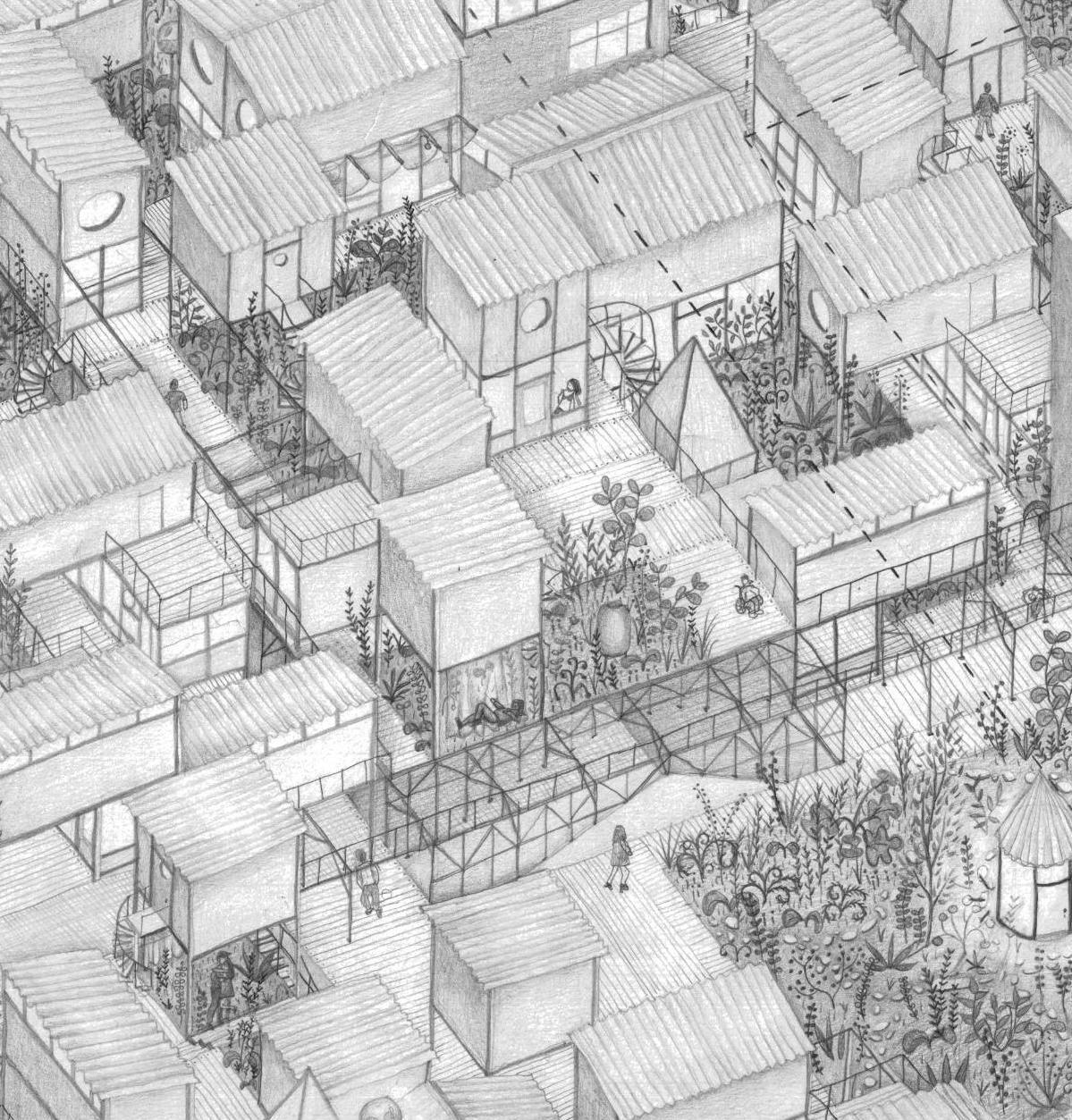
142

143
144
Responsive to its context, the project embrace its setting and emphasizes its qualities. In a tiny, intimate courtyard on the ground floor, starts a small, direct staircase which allows clients and workers to access the room much more direct ly. Intimacy is key.

145
basic typology L shaped typology walk-around typology nest typology group typology
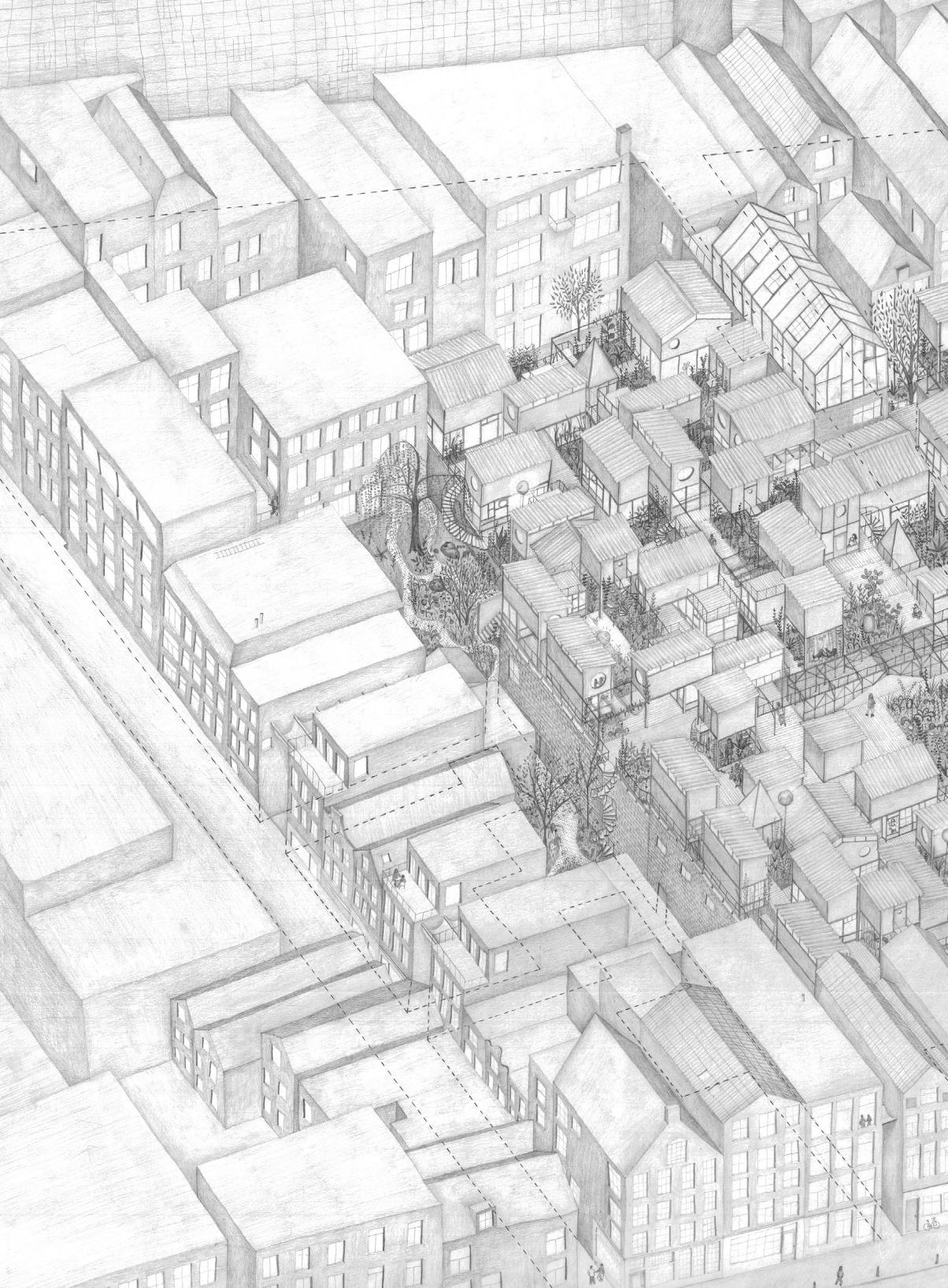
146

147
TYPOLOGIES
single typology
This typology is the base for the other typologies. It consists of a large glazed space for window work (for one person), witing and interaction on the ground floor, while upstairs hosts the more private program with the bedroom adn bathroom.
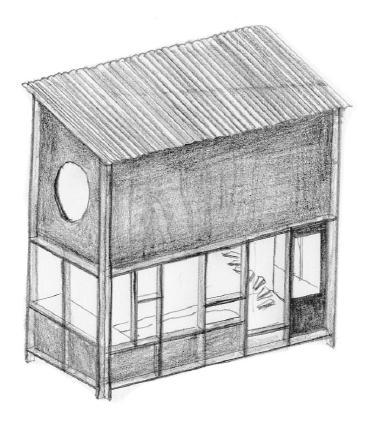
L typology
The L-shaped typology is very similar to the single typology, but the top part has been rotated 90 degrees, so as to offer more privacy in the door area and to free up the rooftop to create an accessible mini terrace. In summer, sex workers can also wait for clients from that space.

148
In the optic of hosting a varied sex work program and answering to the spectrum of sexual needs, different sex-work spaces were carefully developped.
walk-around typology
The walk-around typology are a smaller variation of the single typology. They offer a more open window space, which can be more exposed - this is a matter of personal preference.
group work typology
For the workers who prefer to work in groups, the group work typology offers a large open space on the ground floor, highlighting the theatrical nature of sex work and allowing performance and movement. Upstairs, two bedrooms can be used by 2 to 4 sex workers.
love nest typology
The love nest typologies are intended for use by escorts, who can the rooms on hourly rates. Since there is no window space needed, the bedroom is mounted on pilotis and accessed by small stairs. The resulting space underneath can be used as a semi-private resting space, and can be mounted with light curtains to provide extra privacy



149
Simple spaces were designed for the basic sex work typology. On the ground floor, a large window space with varying de grees of privacy and a large, day-bed -like structure on the window, offer sex work ers flexibility in the way they can work. Upstairs, the simplicity of the space and the softness of the surrounding materials allow for a very sensual experience, far from the sterile and cold environments which are present in today’s red light win dows. The atmosphere created oustide is also layered and mysterious, allowing for visibility but using greenery as a natural intimate screen.
150
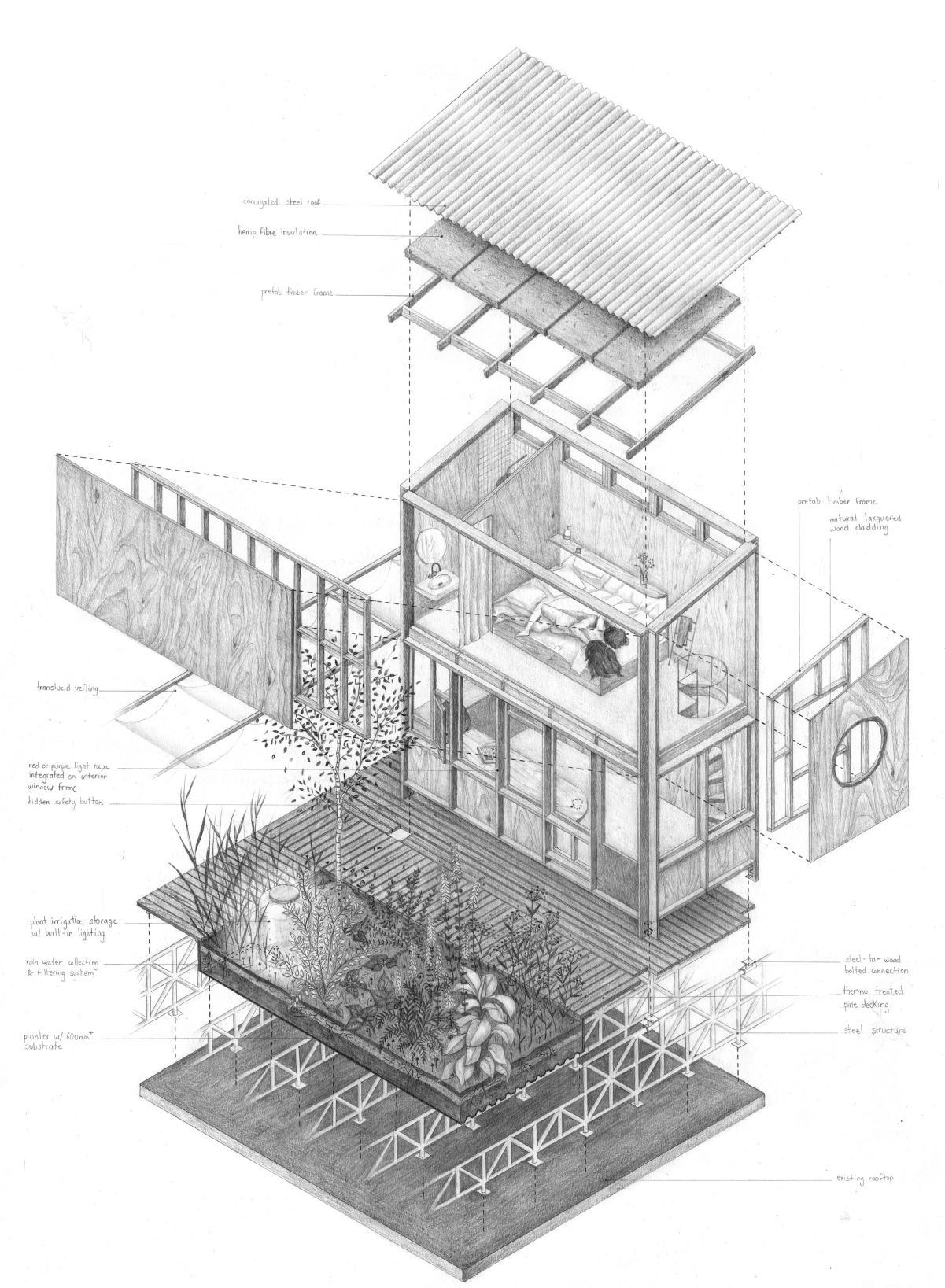
151
IMPRESSIONS
A project to discover and explore Mysterious narrow alleys guide the entrance to the project.
152

153
A slow paced story
Fresh courtyards and hidden stairs give intimacy to both residents and sex workers
154

155
An intimate experience
A central green space and crossing walkway overlooking the project offer intimate public space to the city
156
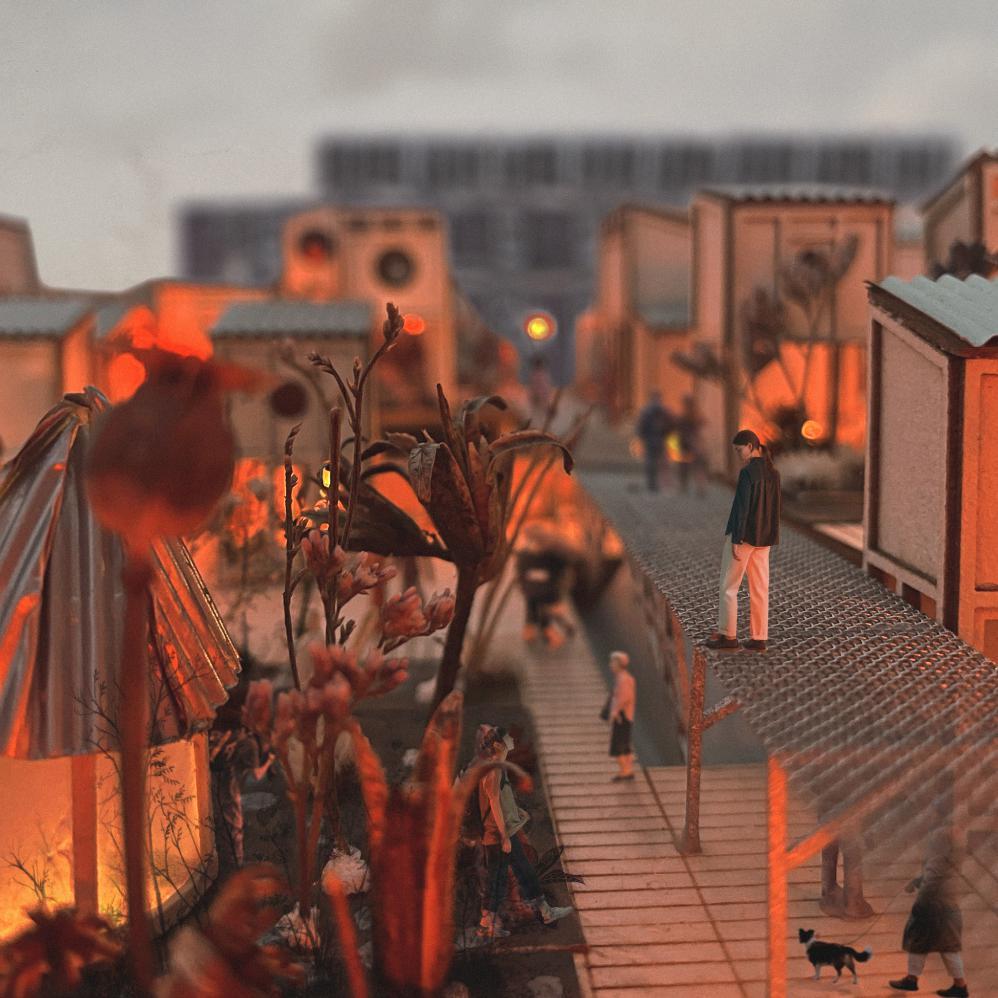
157
An intimate experience
Cozy wooden corridors provide slow-paced circulation and lively interactions
158

159
An intimate experience
Warm red lights, vegetation and veilings create a layered and romantic atmosphere.
160

161
XXX at night
The ensemble’s characteristic and sensual atmophere reveals itself and comes to life at night
162

163
BIBLIOGRAPHY
D. Agrest, P. Conway, L. Weisman, The sex of architecture, Harry N. Abrams, New York, Inc. Publishers, 1996
R. Boer, Wallen 2020: A counter manifesto, www.wallen2020.nl, 2020
M. Bodegraven, Transparent Pod, Laptop, Bed, State-of-the-Art Webcam: How COVID-19 Changed the Online Sex Industry, www.failedarchitecture.com, 2021
B. Colomina, Sexuality & Space, Princeton Architectural Press, 1992
Failed Architecture, Architecten, Ontwikkelaars, Bouwbedrijven: Werk Niet Mee aan het “Erotisch Centrum” in Amsterdam, www.failedarchitecture.com, 2022
Failed Architecture, Red Light District Under Control, www.failedarchitecture.com, 2021
S. Federici, Caliban and the witch, Autonomedia, 2004
E. Jeffreys, A. Autonomy, J. Green, C. Vega, Listen to sex workers: support decriminalisation and anti-discrimination protections, Scarlet Alliance Australian Sex Workers Association, 2011
D. Kuhlmann, Gender Studies in Architecture: Space, Power and Difference, London, Routledge, 2014
S. Lavin, Form follows Libido, MIT Press, 2005
D. Massey, Space, place and gender, John Wiley & Sons, 2013
B. Neuts, T. Devos, T. Dirckx, Turning off the red lights: Entrepreneurial urban strategies in ‘De Wallen’ Amsterdam, Applied Geography, 2014
M. Singelenberg & W. van Gent, Red Light gentrification in Soho, London and De Wallen, Amsterdam, Universiteit van Amsterdam, 2020
M. Smith, Sex workplaces: management of in/visibility, https://www.architectural-review.com, 2022
M. Smith & J. Mac, Revolting prostitutes: The Fight for Sex Workers’ Right, Verso, 2020
J. Williams, Richard, Sex and buildings, Reaktion Books, 2013
164
ACKNOWLEDGEMENTS
This project was made possible through the help and support of: Jako & Hetty Hurkmans
Léa Soret Charlotte Piton Vincent Lulzac Andrej Badin Arjan van Ruyven
Georges, Valérie & Audrey Torres Liberto Torres
Special thanks to the input and participation of: Prostitution Information Center
Jacqy Paula Iris Jorma René Boer Ad Poppelars
Thank you to the members of my committee for their trust and encouragement: Hiroki Matsuura Chiara Dorbolò
Dafne Wiegers
165
















































































































































































